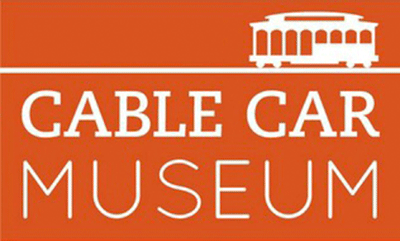
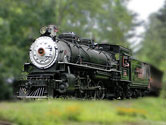






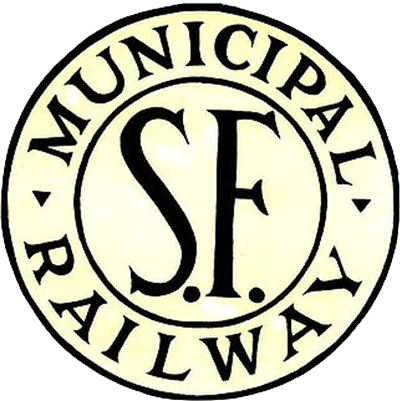 |
San Francisco Cable Car MuseumFriends of the Cable Car Museum |
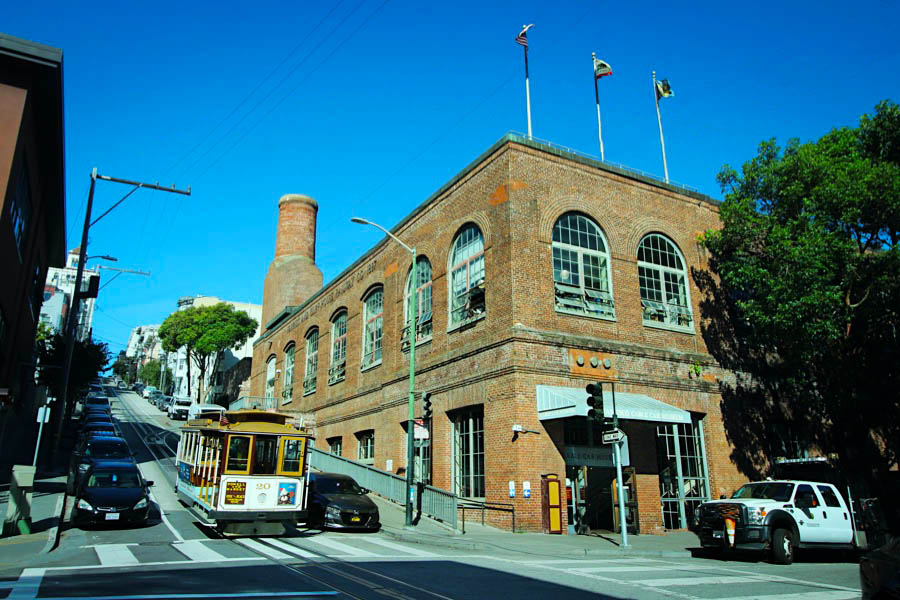
San Francisco, Ca / Sep 2023 / RWH

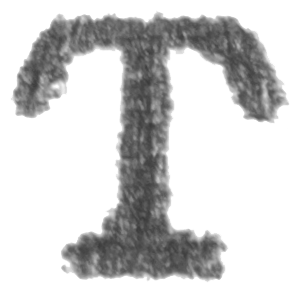 he Friends of the Cable Car Museum is nonprofit organization dedicated to the preservation of cable car history. Our goals are to continue to enhance the museum exhibits and strive to raise the public's awareness of the importance of the cable car to San Francisco, by reaching beyond the walls of 1201 Mason Street.
he Friends of the Cable Car Museum is nonprofit organization dedicated to the preservation of cable car history. Our goals are to continue to enhance the museum exhibits and strive to raise the public's awareness of the importance of the cable car to San Francisco, by reaching beyond the walls of 1201 Mason Street.
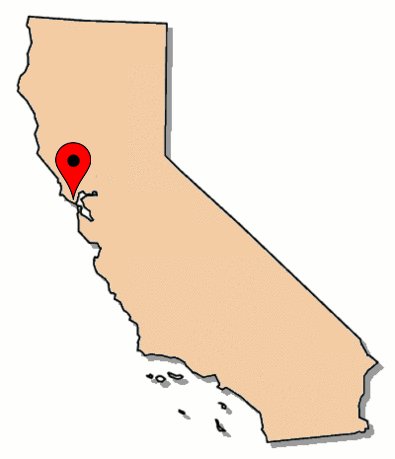
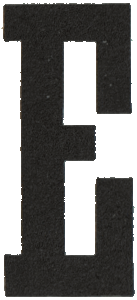 stablished in 1974, the San Francisco Cable Car Museum is located in the Nob Hill neighborhood of the city, on the corner of Mason and Washington Streets. Operated by the nonprofit Friends of the Cable Car Museum group, the exhibits are housed in the historic Washington/Mason cable car barn and powerhouse — the latter of which provides propulsion for all three historic San Francisco cable car lines in the city. The powerhouse was built in 1887 for the Ferries & Cliff House Railway Company and rebuilt after the 1906 earthquake and fire that devastated the city. It was refurbished in 1967 and then entirely rebuilt in 1982-84.
stablished in 1974, the San Francisco Cable Car Museum is located in the Nob Hill neighborhood of the city, on the corner of Mason and Washington Streets. Operated by the nonprofit Friends of the Cable Car Museum group, the exhibits are housed in the historic Washington/Mason cable car barn and powerhouse — the latter of which provides propulsion for all three historic San Francisco cable car lines in the city. The powerhouse was built in 1887 for the Ferries & Cliff House Railway Company and rebuilt after the 1906 earthquake and fire that devastated the city. It was refurbished in 1967 and then entirely rebuilt in 1982-84.
Inside the historic building, the museum's long viewing deck overlooks the large electric motors and winding wheels that pull the system's cables and cars. Downstairs, a viewing area offers access to the large sheaves and cable lines entering the building through the channel under the street. On display throughout are numerous mechanical devices associated with this unique form of public transportation, plus three antique San Fran cable cars from the late 19th century. A Muni cable car barn is attached to the rear of the powerhouse building, where cars for the Hyde and Mason Street lines are serviced and stored.

Click to see the San Francisco Cable Car Museum plotted on a Google Maps page
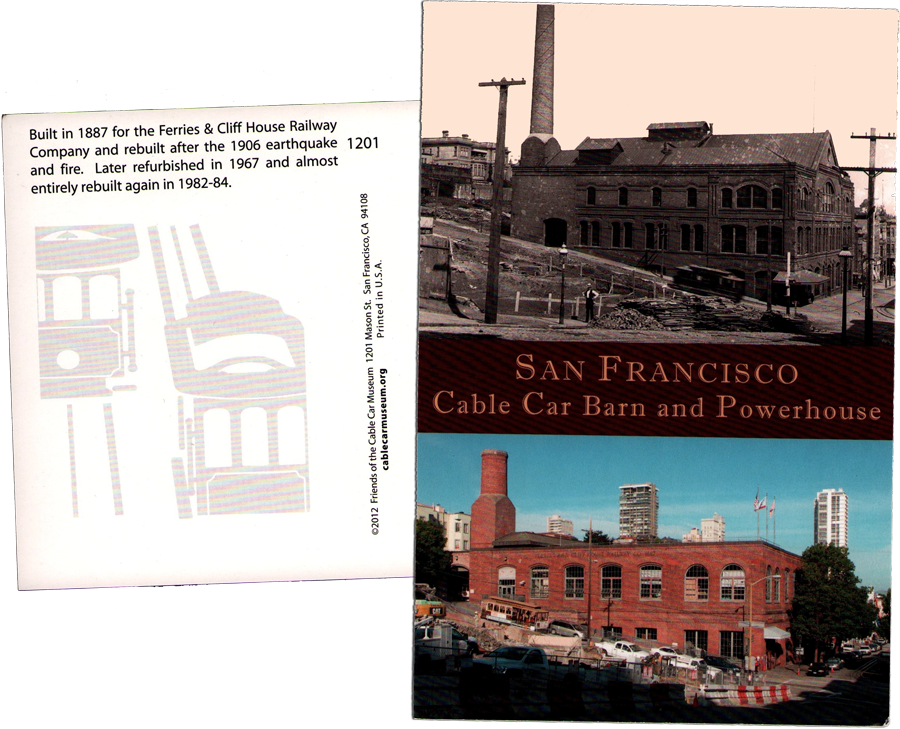
postcard / collection

2013 tourist train guide ad / collection
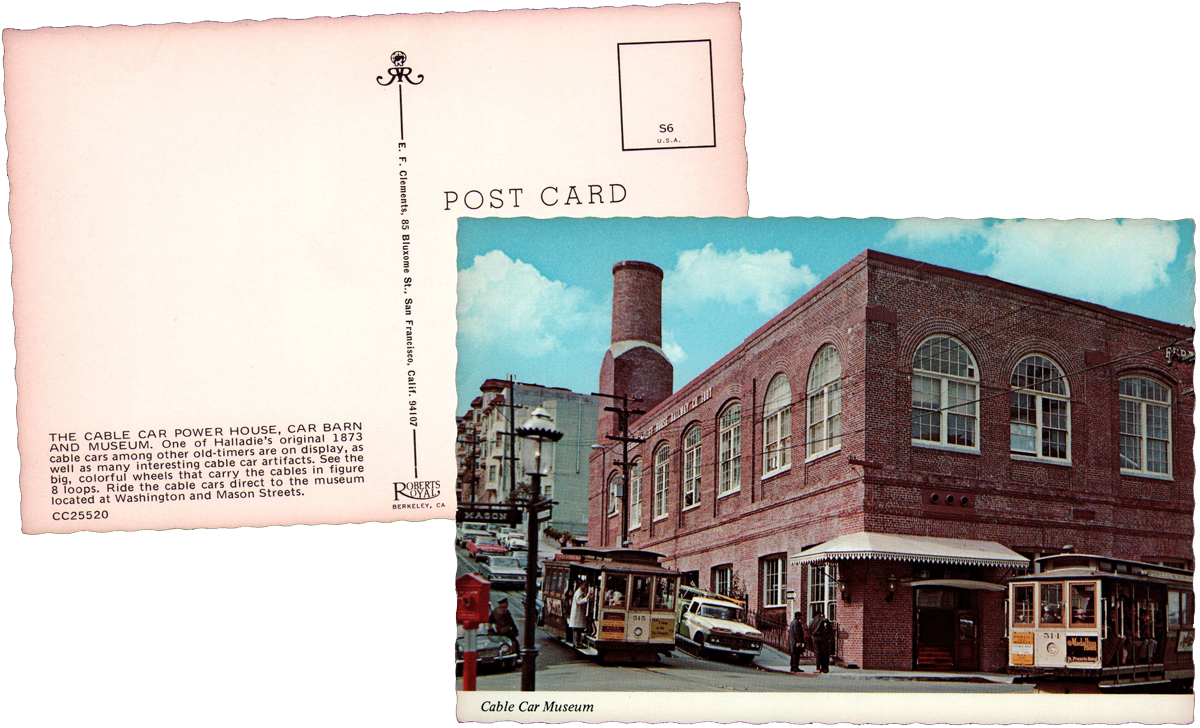
postcard / collection

See also these related San Francisco scrapbooks:
- San Francisco Cable Car System in Streetcars
- San Francisco Railway Museum in Preservation
- Amtrak's California Zephyr western route in Mainlines
Powerhouse

Sep 2023 / RWH

Sep 2023 / RWH
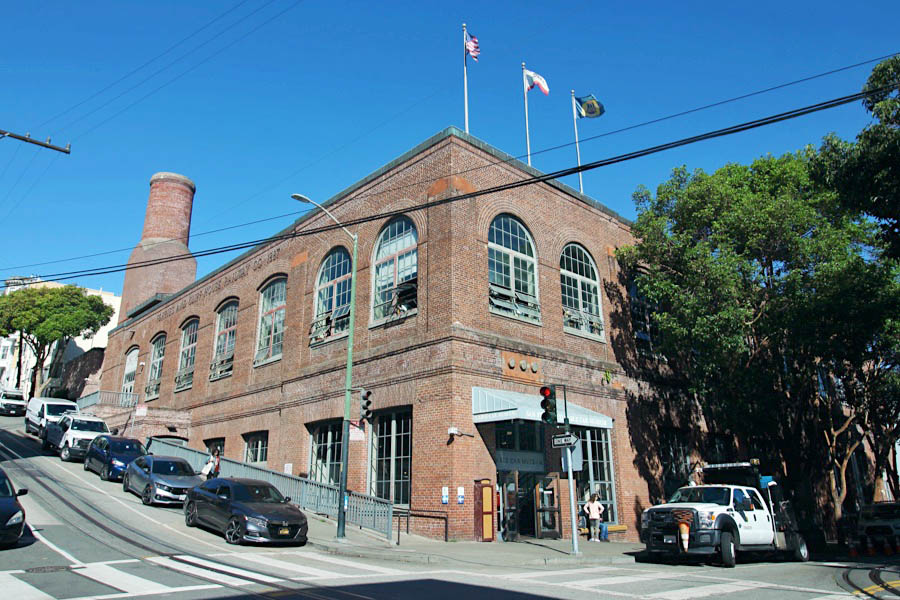
San Francisco, Ca / Sep 2023 / RWH
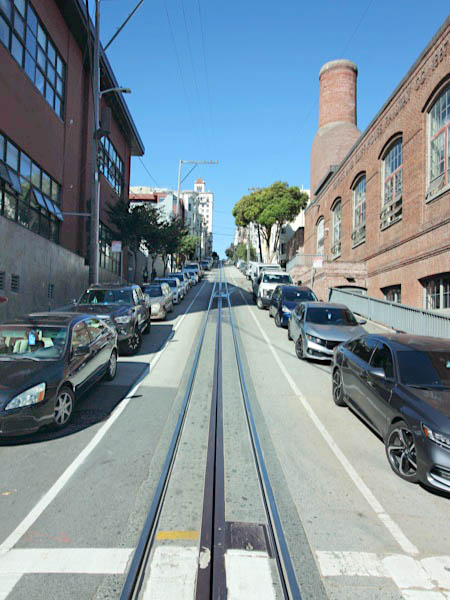
Sep 2023 / RWH
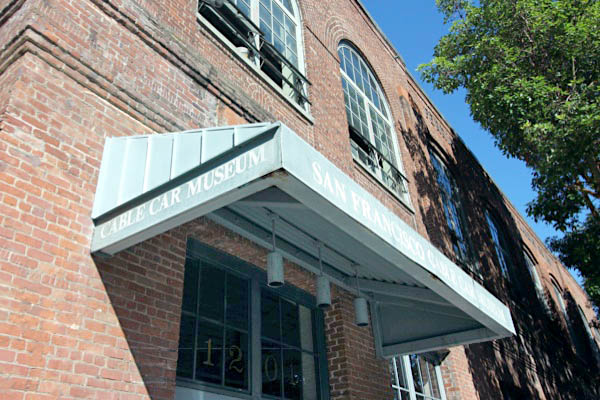
Sep 2023 / RWH
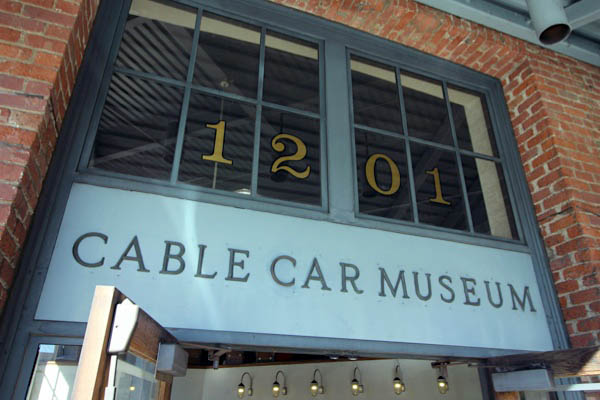
Sep 2023 / RWH
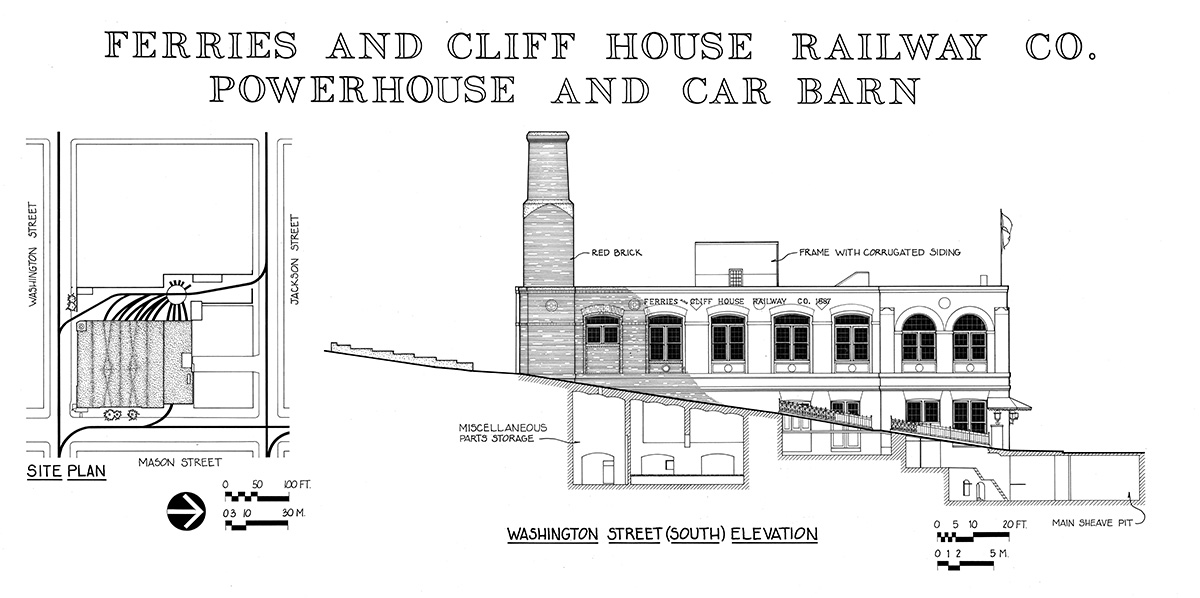
Historic American Engineering Record (Library of Congress)
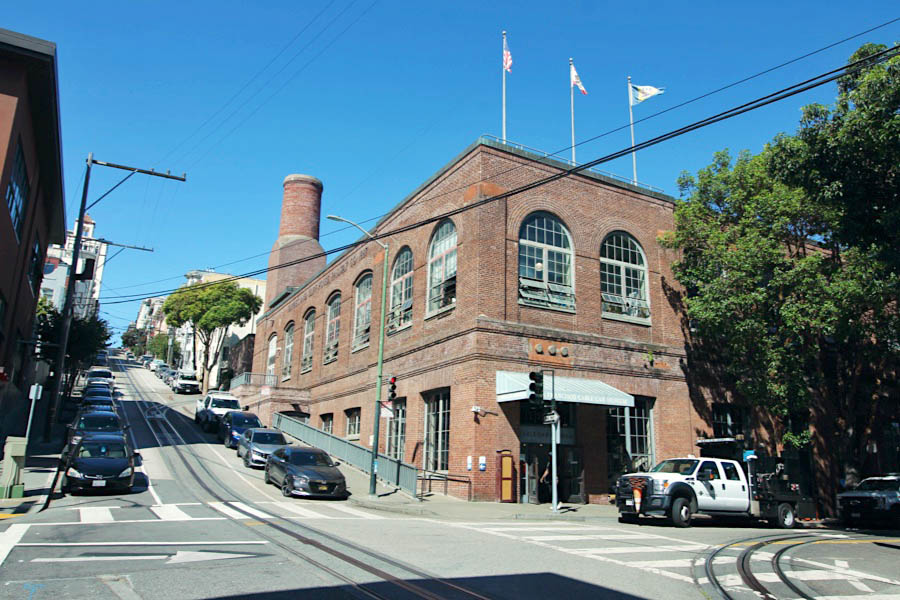
San Francisco, Ca / Sep 2023 / RWH
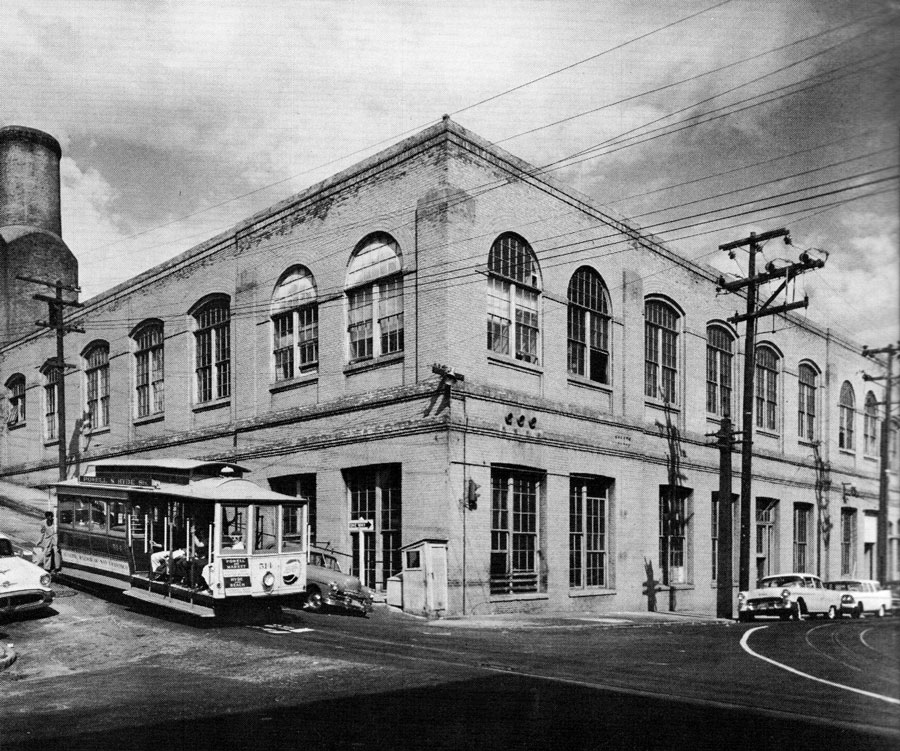
from The Cable Cars of San Francisco
by Phil and Mike Palmer - 1959 / collection
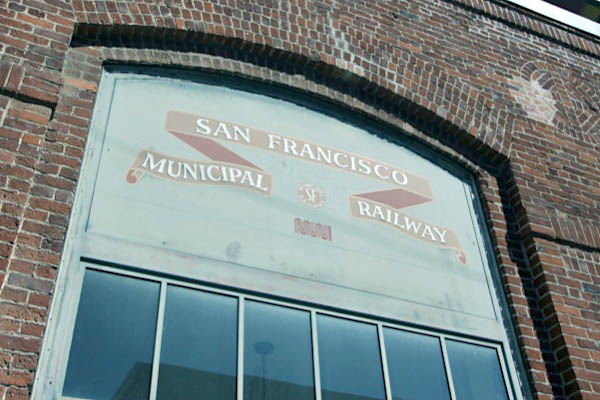
Sep 2023 / RWH

Sep 2023 / RWH

San Francisco, Ca / Sep 2023 / RWH
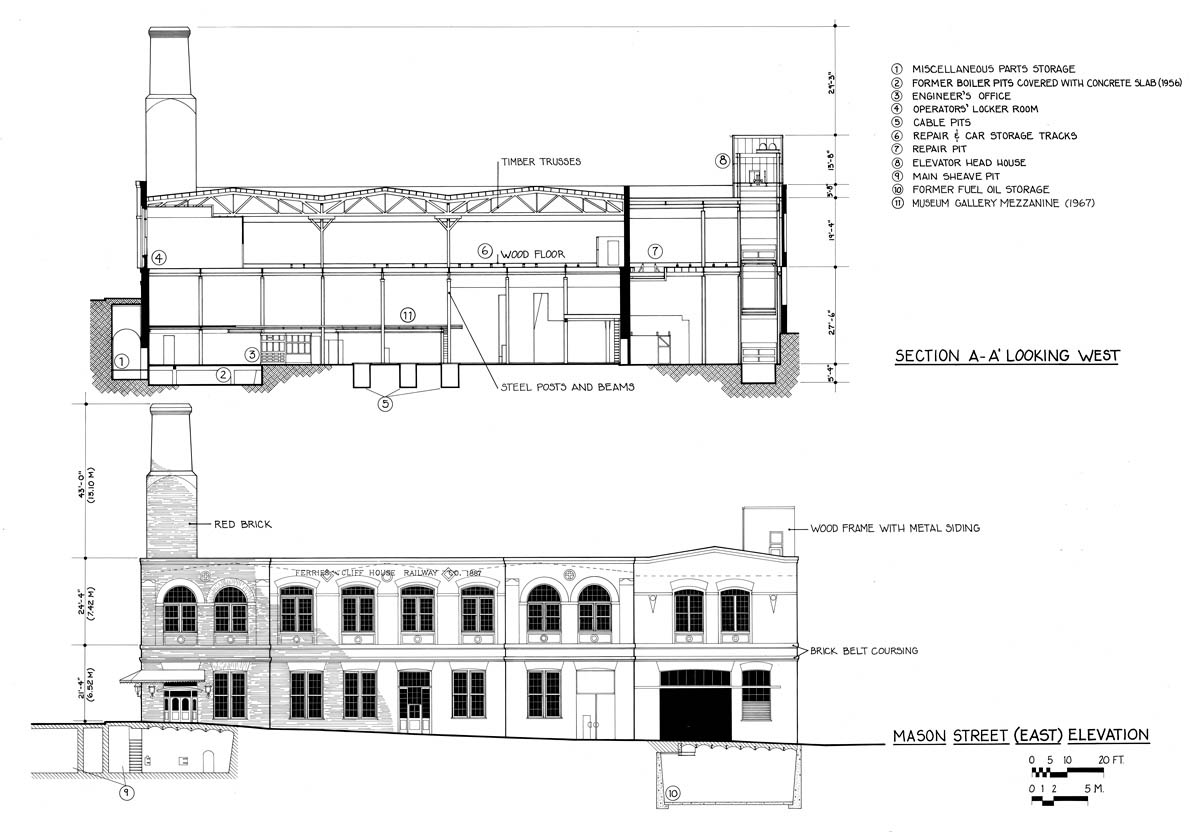
Historic American Engineering Record (Library of Congress)

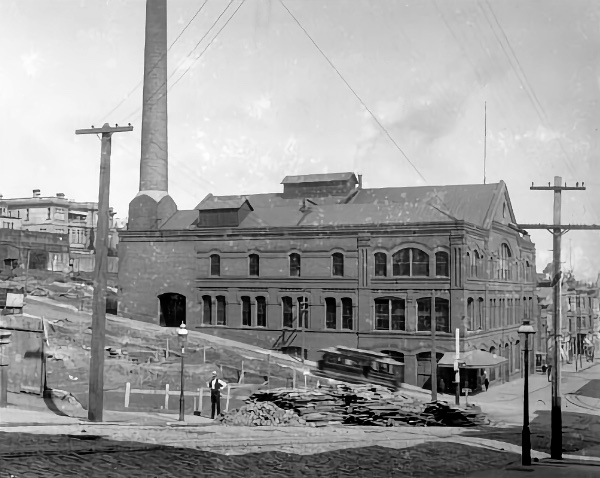
 an Francisco's three surviving cable car routes all operate out of this two-story brick building. Erected in 1907-08, this structure replaced a three-story brick powerhouse and car barn built in 1887-89 by the Ferries & Cliff House Railway and destroyed by the earthquake and fire in April 1906. The present edifice, constructed at a cost of $75,000, was built on the footings and foundations of the original building. The first floor houses the winding machinery for the three cables and their associated drive motors, converted from steam to electricity in 1911. A machine shop is also located on this floor. The cables enter and exit the building through a sheave vault located under the sidewalk at the southeast corner of the building. Tracks for car storage and repair, three car repair pits, and offices occupy the second floor. The powerhouse is built into the slope of a hill, so that the rear of the second floor opens onto a yard with several outbuildings, a turntable, and a number of tracks. The turntable is used to spot incoming cars onto the repair and storage tracks, and to direct outbound cars onto the street. The original building handled cars by means of transfer tables on the two upper floors instead of with a turntable. The building has undergone few major structural changes since 1907. In 1956-7, when the operation of the California Street cable was incorporated into the building, a concrete slab was poured over the former boiler pits along the south wall of the first floor. Incorporation of a museum and visitor's gallery in 1967 required construction of a mezzanine along the building's south wall. This work also included the conversion of the southernmost window on the Mason Street facade into a doorway providing access to the mezzanine. Other alterations made as a result of the museum include a decorative canopy at the building's southeast corner, the flagpoles on the roof, and various signs and fittings intended to convey a sense of the building's age and function.
an Francisco's three surviving cable car routes all operate out of this two-story brick building. Erected in 1907-08, this structure replaced a three-story brick powerhouse and car barn built in 1887-89 by the Ferries & Cliff House Railway and destroyed by the earthquake and fire in April 1906. The present edifice, constructed at a cost of $75,000, was built on the footings and foundations of the original building. The first floor houses the winding machinery for the three cables and their associated drive motors, converted from steam to electricity in 1911. A machine shop is also located on this floor. The cables enter and exit the building through a sheave vault located under the sidewalk at the southeast corner of the building. Tracks for car storage and repair, three car repair pits, and offices occupy the second floor. The powerhouse is built into the slope of a hill, so that the rear of the second floor opens onto a yard with several outbuildings, a turntable, and a number of tracks. The turntable is used to spot incoming cars onto the repair and storage tracks, and to direct outbound cars onto the street. The original building handled cars by means of transfer tables on the two upper floors instead of with a turntable. The building has undergone few major structural changes since 1907. In 1956-7, when the operation of the California Street cable was incorporated into the building, a concrete slab was poured over the former boiler pits along the south wall of the first floor. Incorporation of a museum and visitor's gallery in 1967 required construction of a mezzanine along the building's south wall. This work also included the conversion of the southernmost window on the Mason Street facade into a doorway providing access to the mezzanine. Other alterations made as a result of the museum include a decorative canopy at the building's southeast corner, the flagpoles on the roof, and various signs and fittings intended to convey a sense of the building's age and function.
Library of Congress
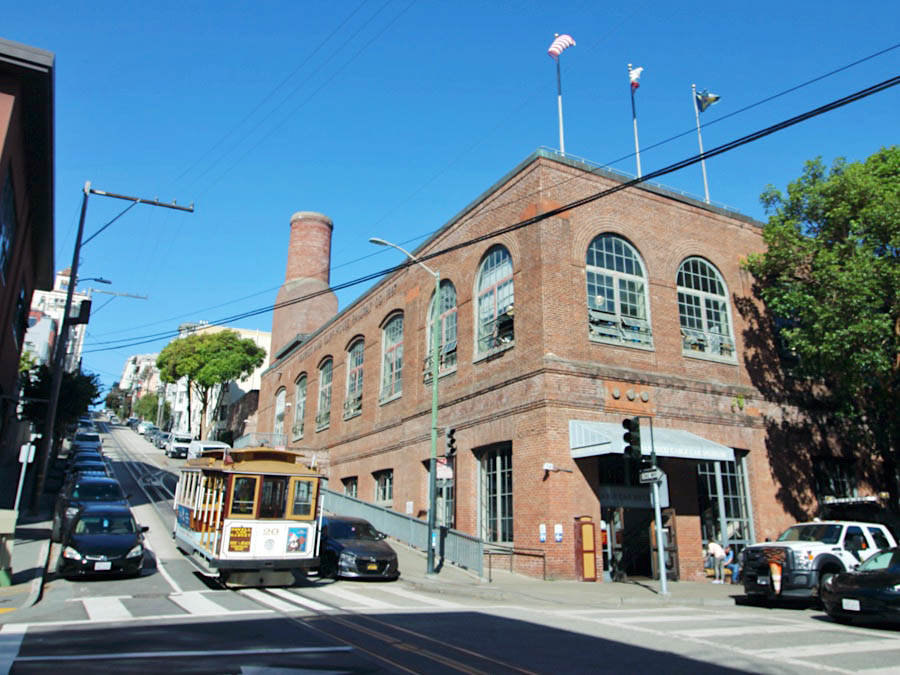
San Francisco, Ca / Sep 2023 / RWH
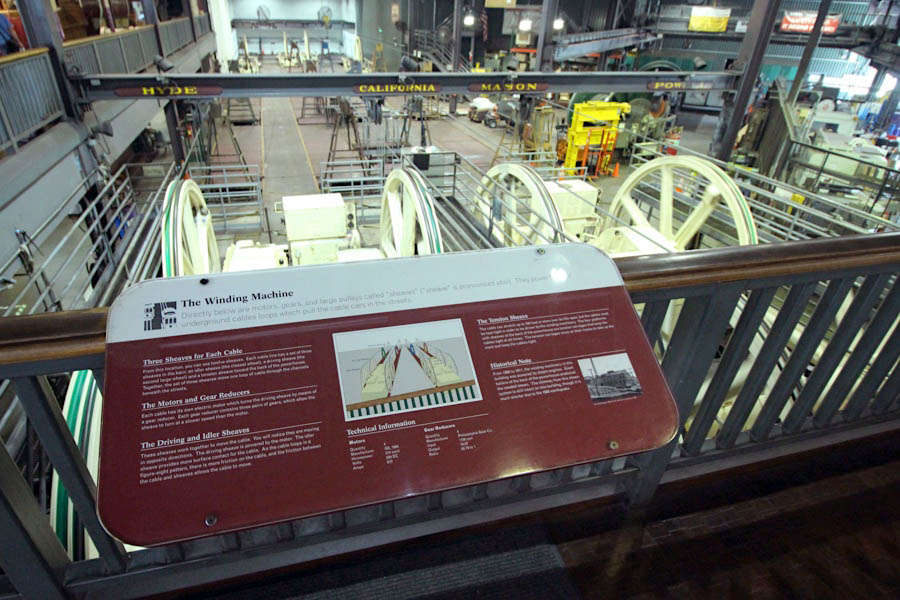
Sep 2023 / RWH
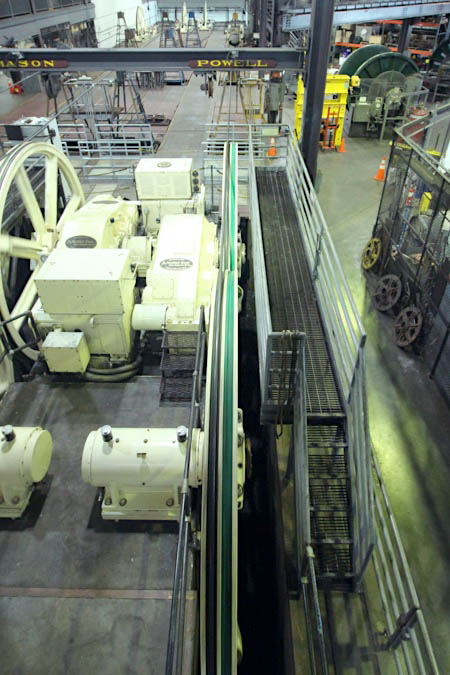
Sep 2023 / RWH
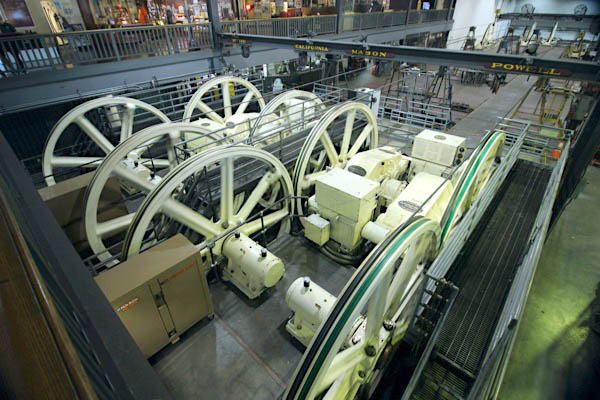
Sep 2023 / RWH
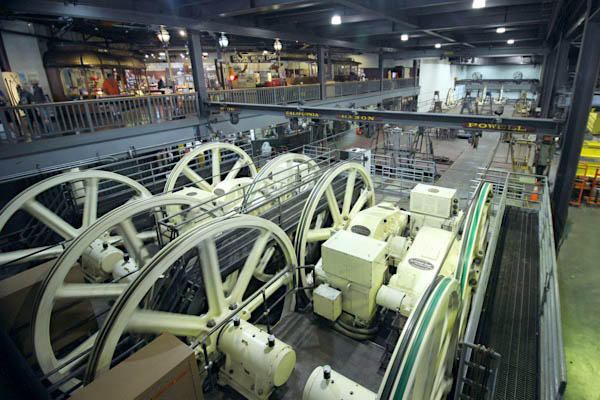
Sep 2023 / RWH
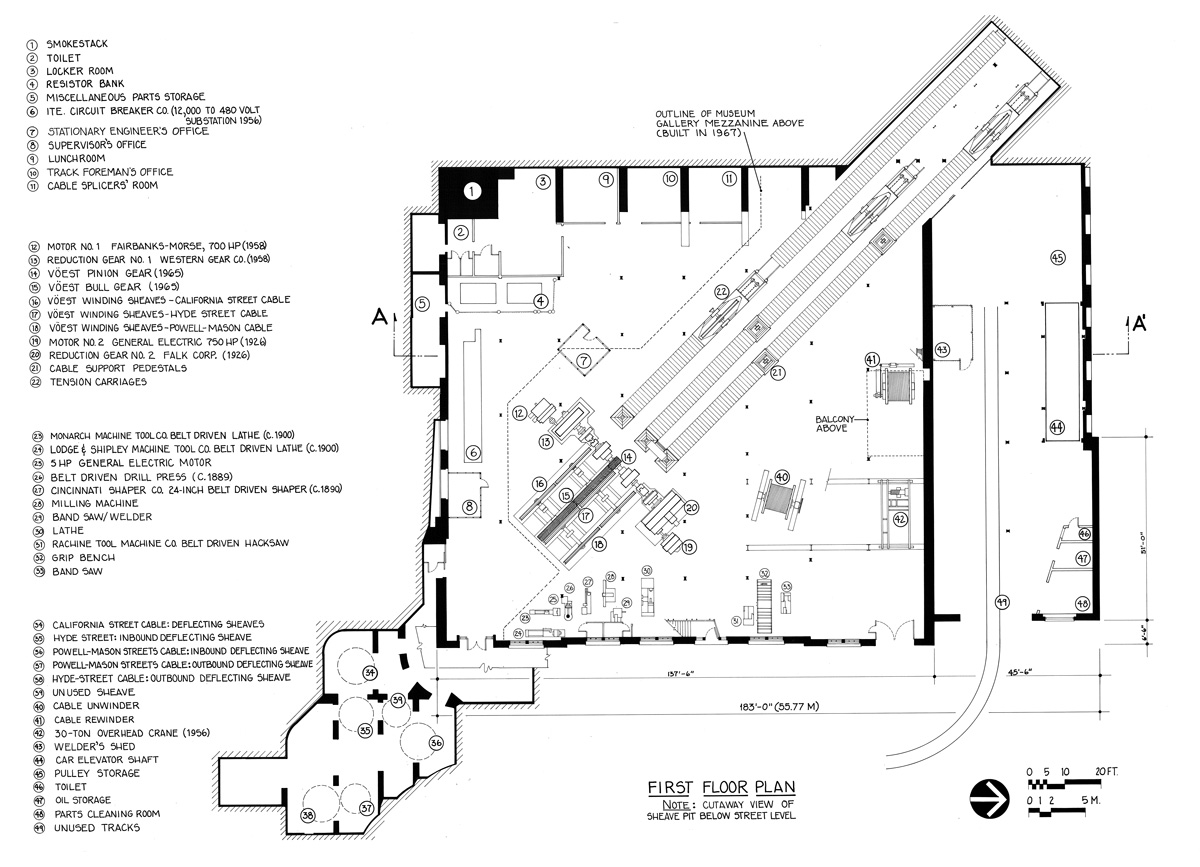
Historic American Engineering Record (Library of Congress)
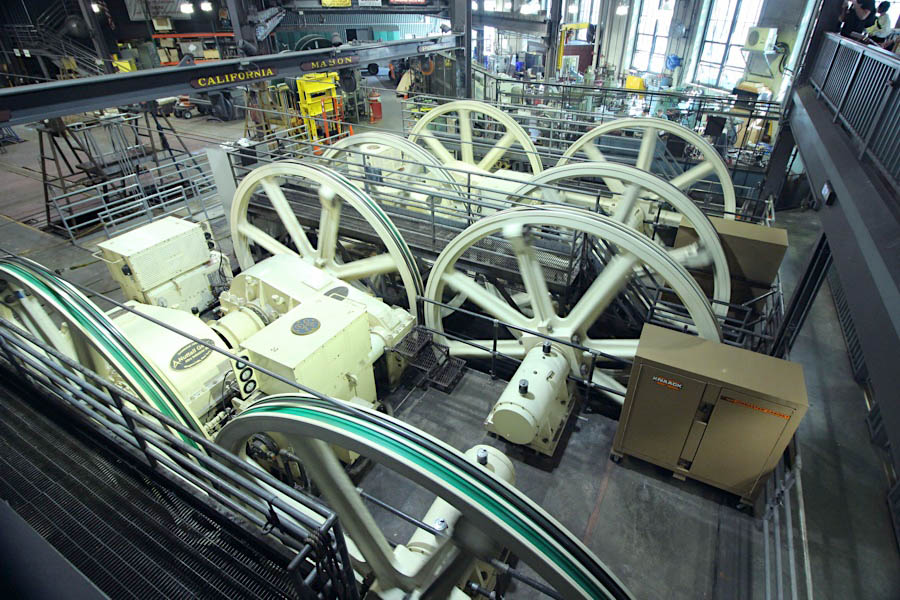
Sep 2023 / RWH

Sep 2023 / RWH
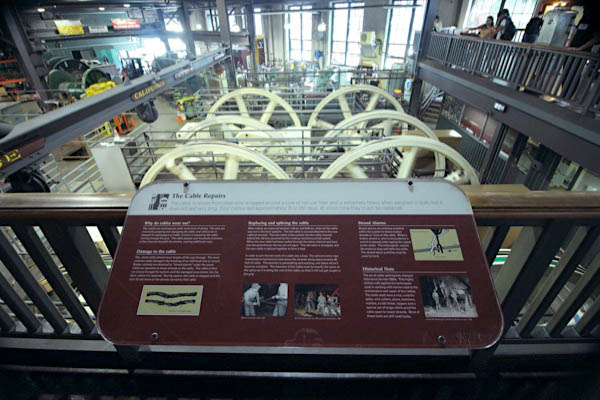
Sep 2023 / RWH
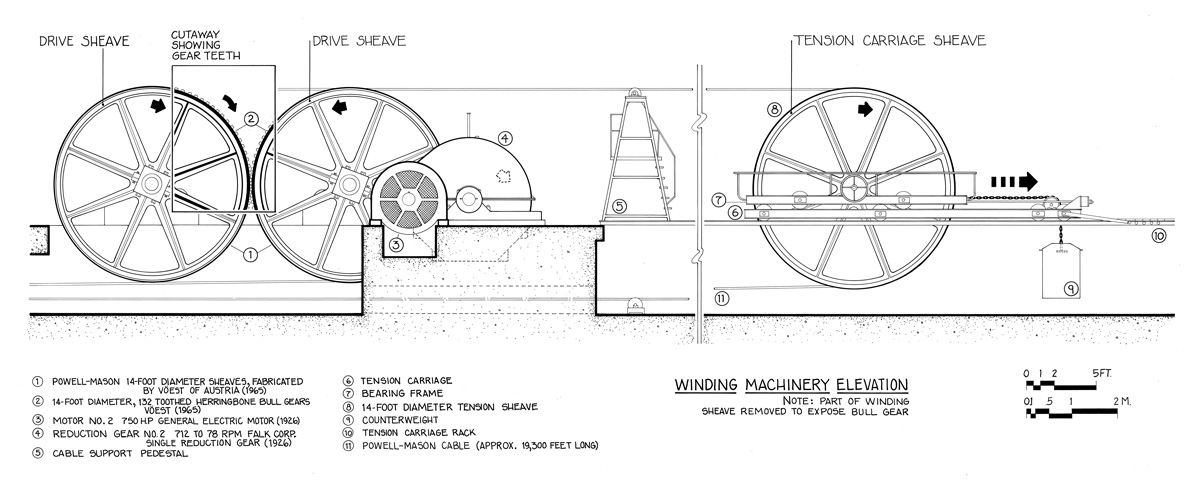
Historic American Engineering Record (Library of Congress)

Sep 2023 / RWH
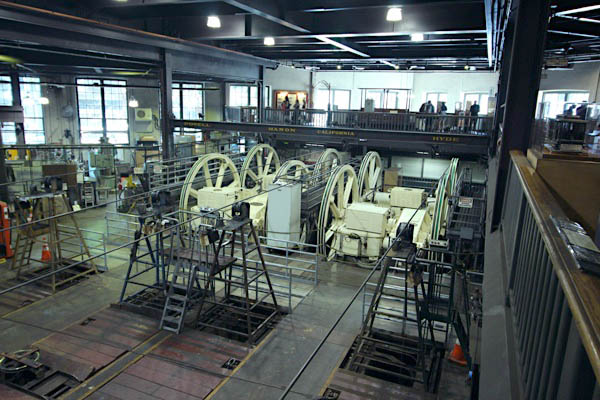
Sep 2023 / RWH
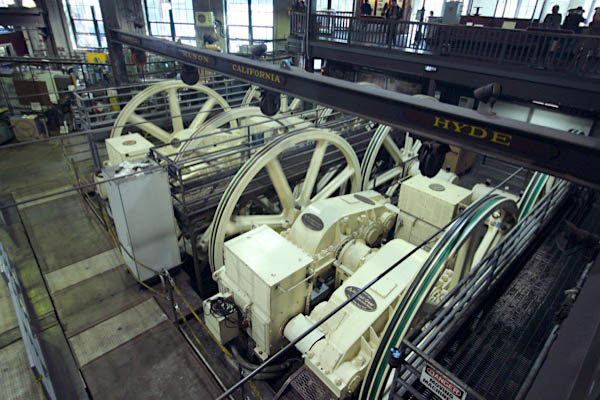
Sep 2023 / RWH
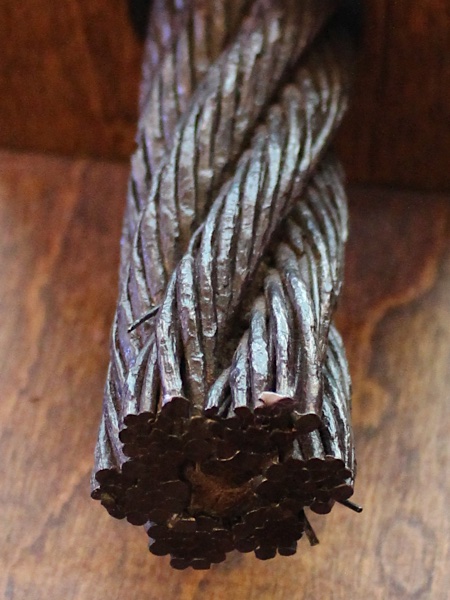 The cable cars are pulled by a cable running below the street, held by a grip that extends from the car through a slit in the street surface, between the rails. Each cable is 1.25 inches in diameter, running at a constant speed of 9.5 miles per hour, and driven by a 510 horsepower (380 kW) electric motor located in the central power house, via a set of self-adjusting sheaves. Each cable has six steel strands, with each strand containing 19 wires, wrapped around a sisal rope core (to allow easier gripping). The cable is coated with a synthetic lubricant to reduce wear and friction. Historically, pine tar was used to lubricate the cable.
The cable cars are pulled by a cable running below the street, held by a grip that extends from the car through a slit in the street surface, between the rails. Each cable is 1.25 inches in diameter, running at a constant speed of 9.5 miles per hour, and driven by a 510 horsepower (380 kW) electric motor located in the central power house, via a set of self-adjusting sheaves. Each cable has six steel strands, with each strand containing 19 wires, wrapped around a sisal rope core (to allow easier gripping). The cable is coated with a synthetic lubricant to reduce wear and friction. Historically, pine tar was used to lubricate the cable.
There are four separate cables: one 16,000-foot length and one 10,300-foot length for the Hyde and Mason segments, a 9,300-foot length for their common Powell section, and one 21,000-foot length for the California Street line.
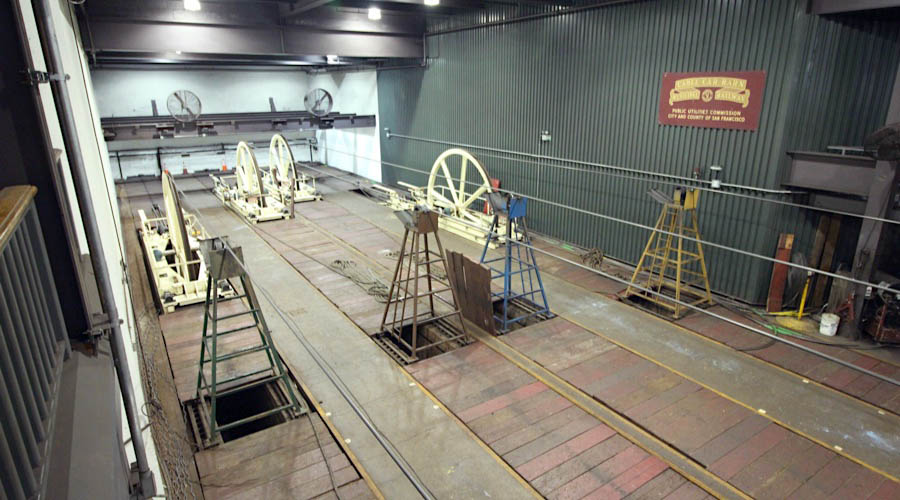
Sep 2023 / RWH
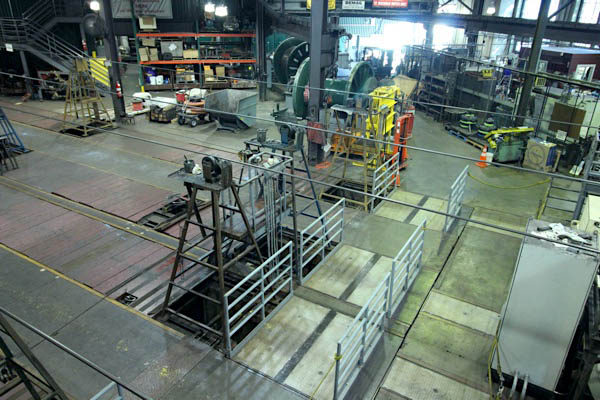
Sep 2023 / RWH
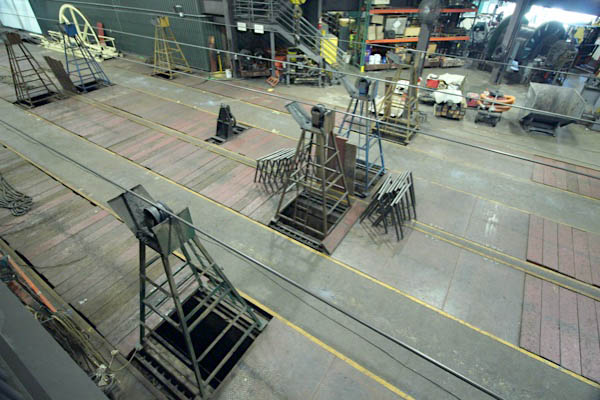
Sep 2023 / RWH
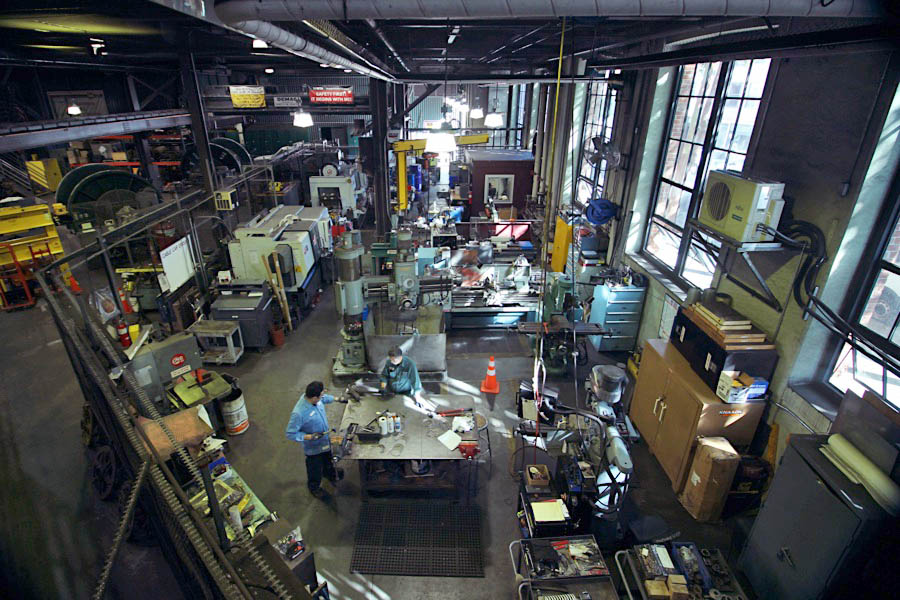
Sep 2023 / RWH
Exhibits

Sep 2023 / RWH

Sep 2023 / RWH
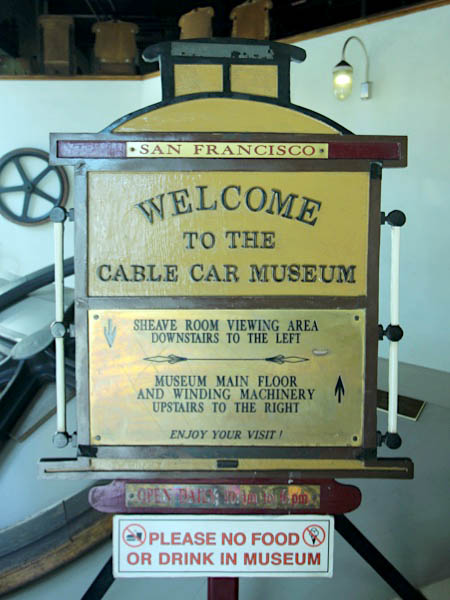
Sep 2023 / RWH

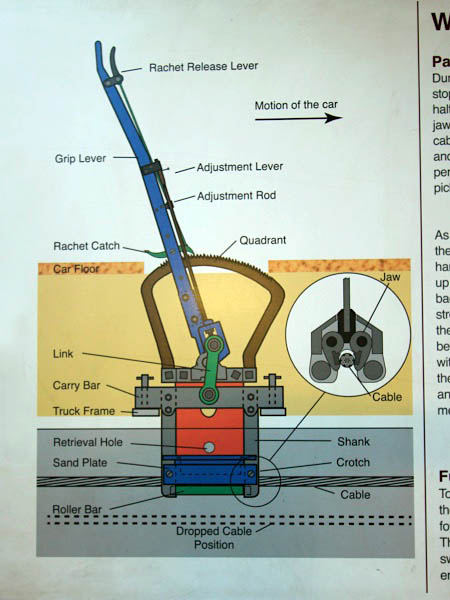
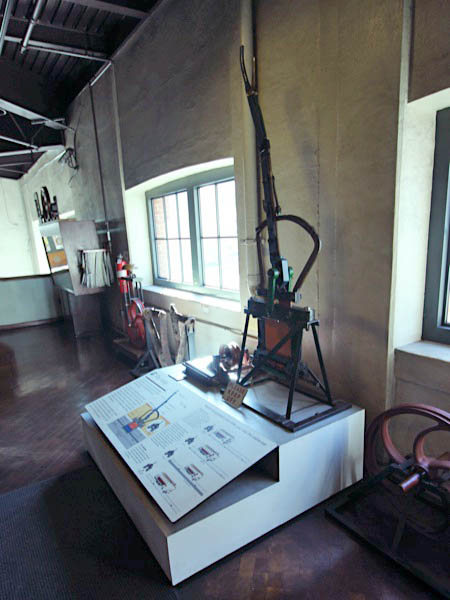
Sep 2023 / RWH
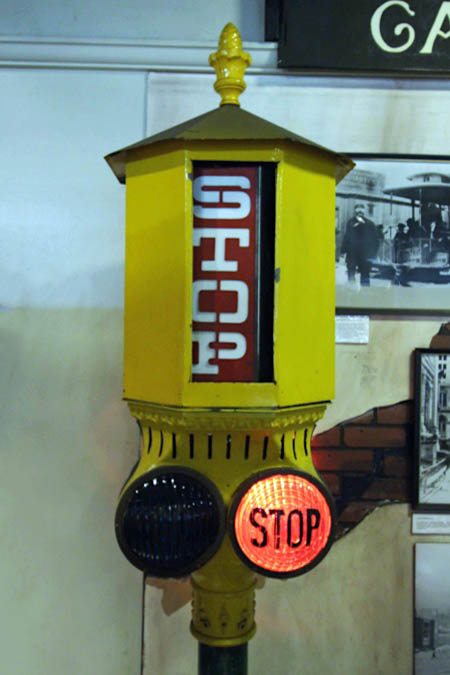
Sep 2023 / RWH
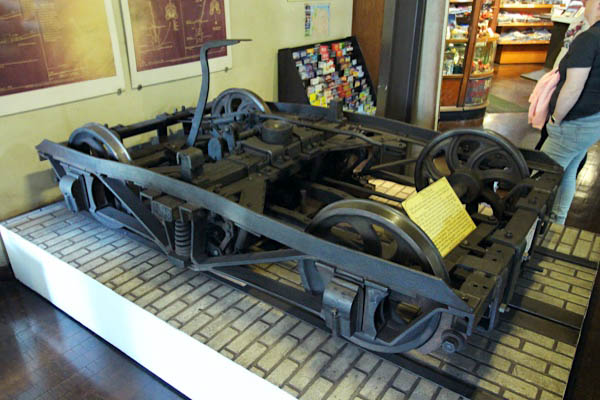
Sep 2023 / RWH
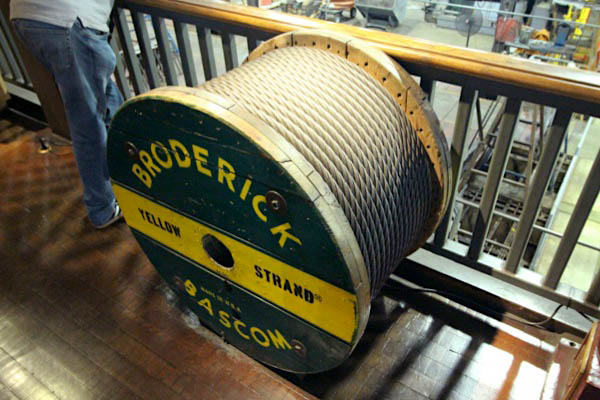
Sep 2023 / RWH

Sep 2023 / RWH

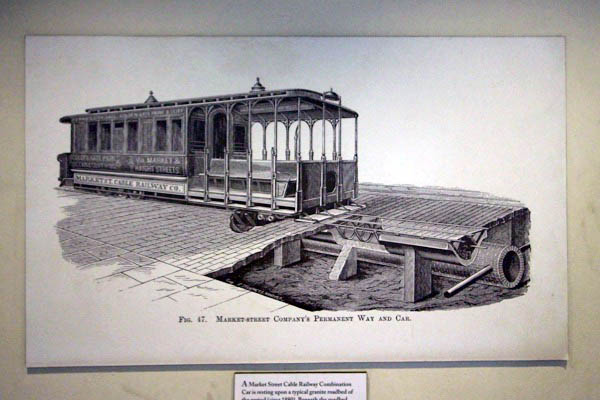
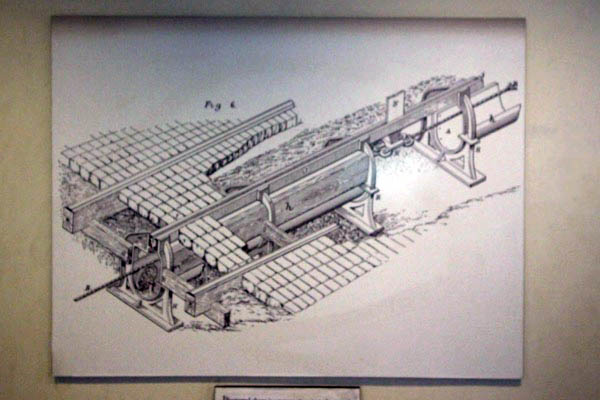
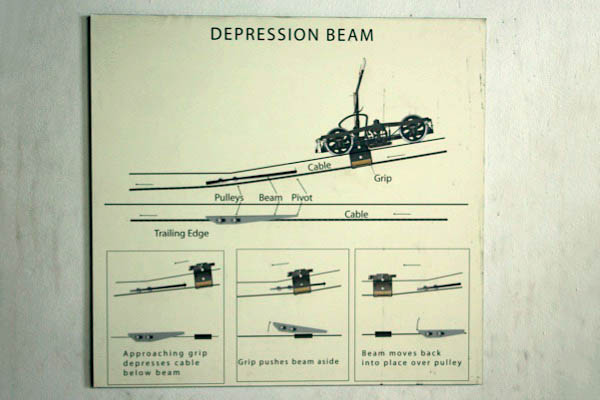
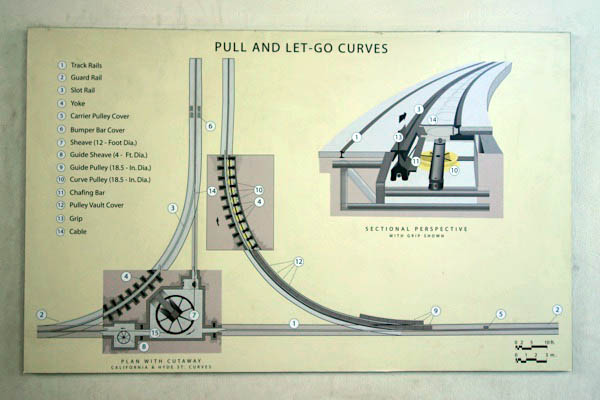

Sep 2023 / RWH
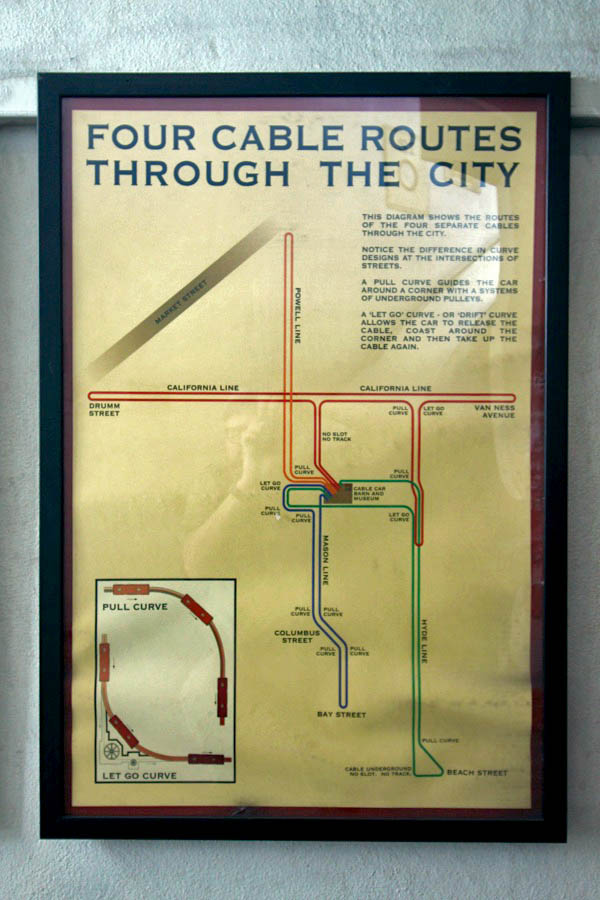
Sep 2023 / RWH
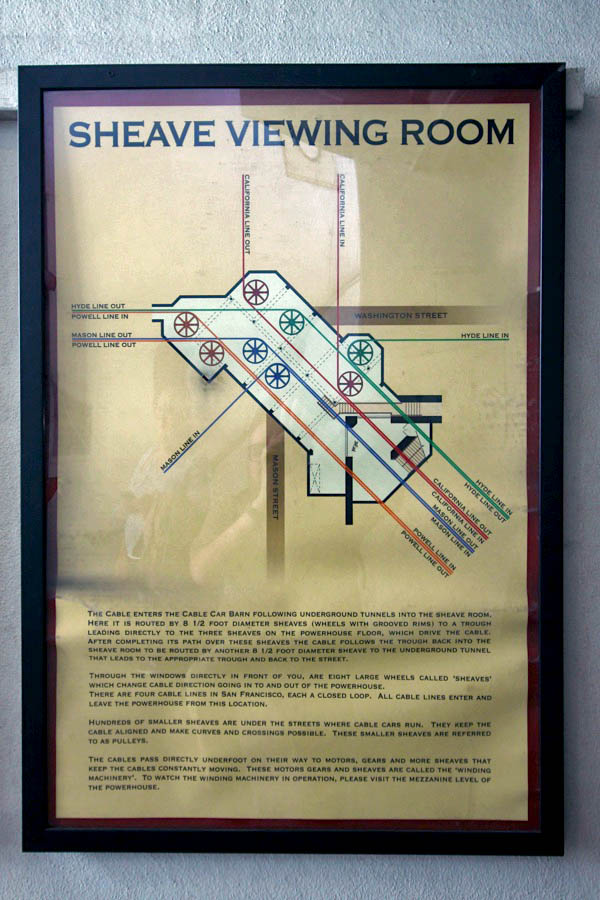
Sep 2023 / RWH

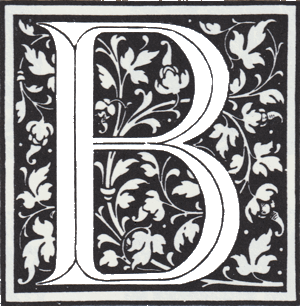 y the mid-1970s, time and constant use were overcoming maintenance efforts for the cable car system, and it was obviously becoming badly deteriorated. An engineering evaluation showed that a complete rehabilitation of the system would be necessary.
y the mid-1970s, time and constant use were overcoming maintenance efforts for the cable car system, and it was obviously becoming badly deteriorated. An engineering evaluation showed that a complete rehabilitation of the system would be necessary.
Beginning September 21, 1982, cable car service was suspended for nearly two years while work commenced under the Cable Car System Rehabilitation Program. Sixty-nine city blocks were involved, as old tracks and cable channels were removed. Heavier rails were introduced. Reinforced-concrete channels replaced the old brick ones. New turntables were built.
The Washington-Mason car barn and powerhouse was almost completely rebuilt. The exterior walls and chimney were retained and reinforced. The powerhouse was equipped with new motors, gearboxes, and strand-alarm systems.
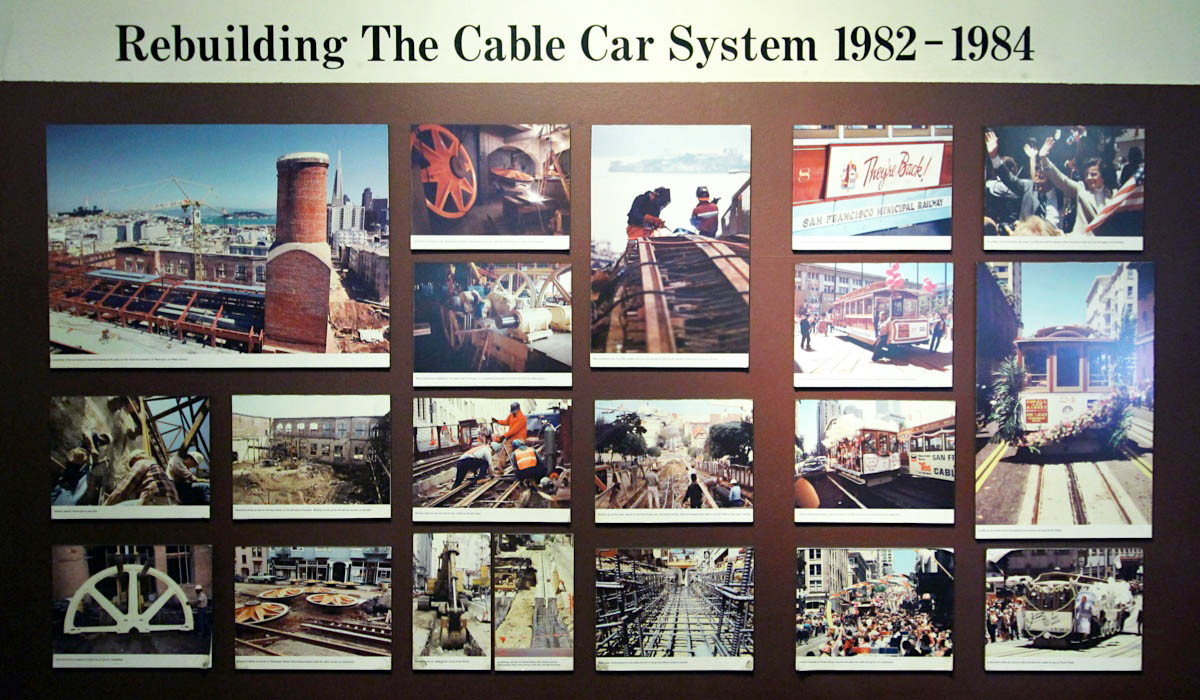 The cable car fleet was also improved. Muni craftspeople repaired 11 California car and 26 Powell cars. One California car was rebuilt. The cars were repainted, rewired for 12-volt batteries, sides and ends were reinforced with sheet-metal, trucks and axles were rebuilt, and braking systems were modified.
The cable car fleet was also improved. Muni craftspeople repaired 11 California car and 26 Powell cars. One California car was rebuilt. The cars were repainted, rewired for 12-volt batteries, sides and ends were reinforced with sheet-metal, trucks and axles were rebuilt, and braking systems were modified.
The rehabilitation was completed in June of 1984, in time for the Democratic Party's national convention that summer. The California line re-opened Sunday, June 3rd. The dedication ceremony for the cable car barn was held on the 4th. On the following Sunday, June 10th, the Powell-Hyde line re-opened.
Thursday, June 21st, 1984, was the first of a four days of festivities celebrating the return of the cable cars. These began with a ribbon cutting ceremony at noon in Union Square, followed by a parade of cable cars up Powell Street, led by the U.S. Marine Corps Band.
Cable Car Museum / image RWH
 Cable Car Models
Cable Car Models

Sep 2023 / RWH
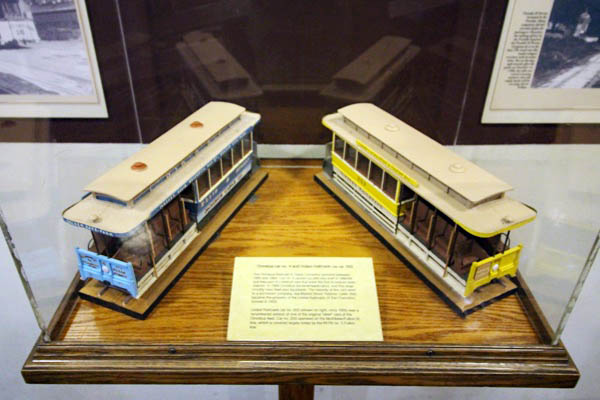
Sep 2023 / RWH

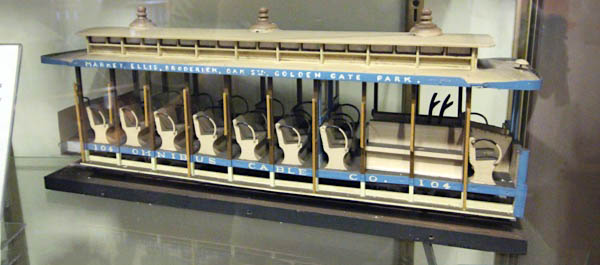


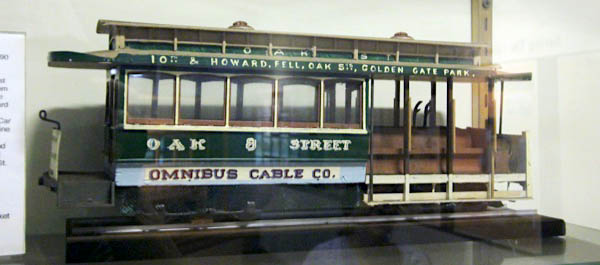
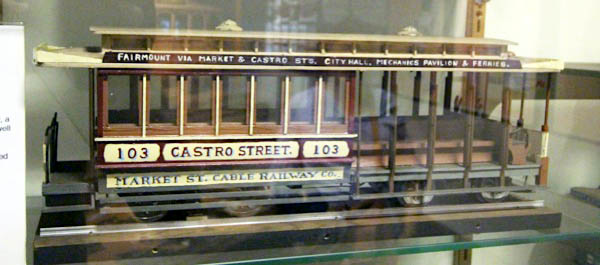

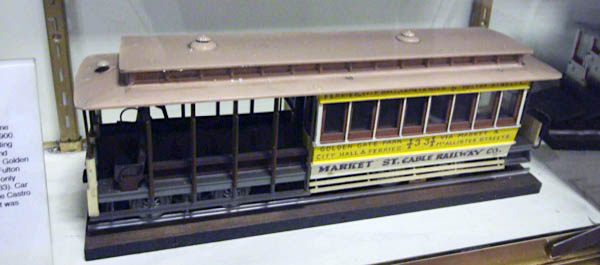
Sep 2023 / RWH
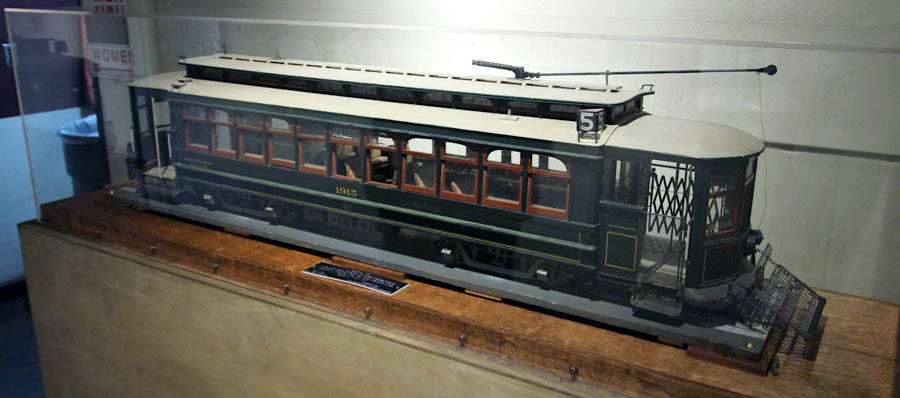
Sep 2023 / RWH
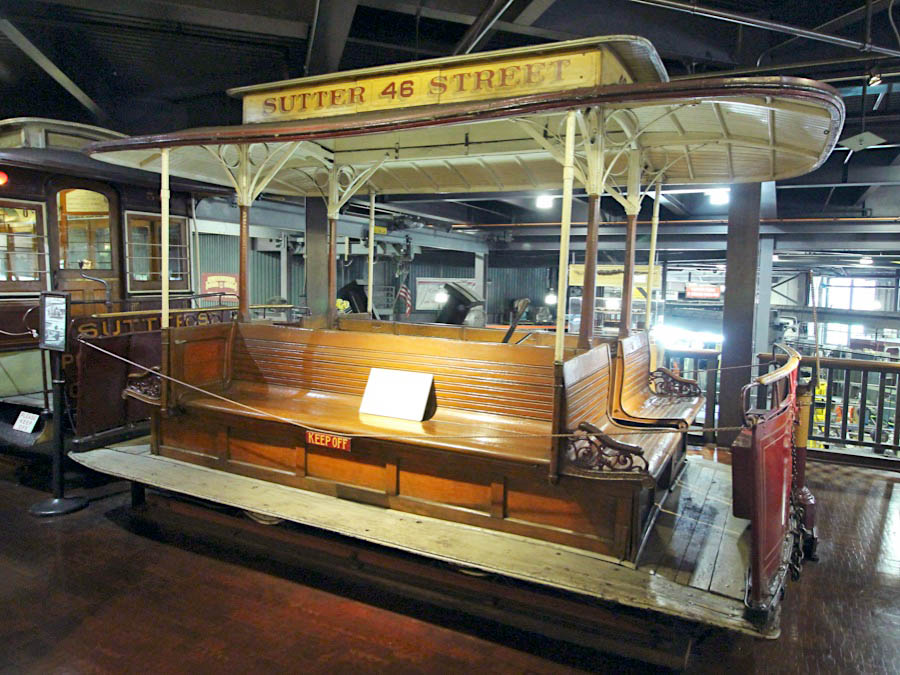
Sutter Street Railway #46
grip car / Sep 2023 / RWH
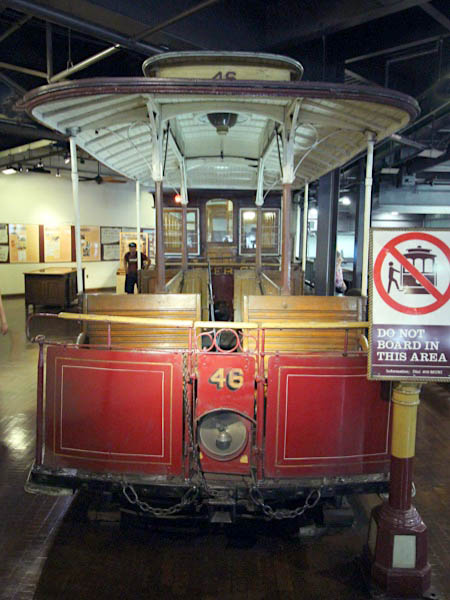
Sep 2023 / RWH
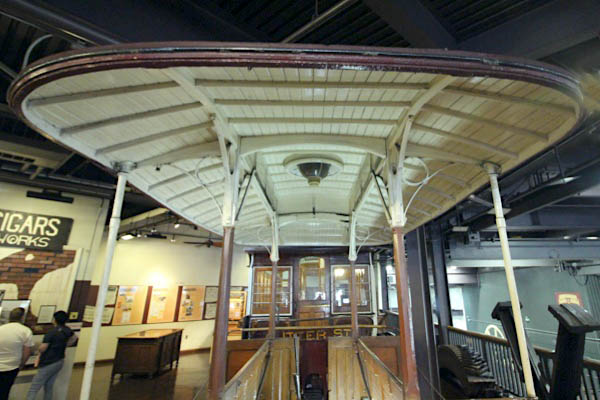
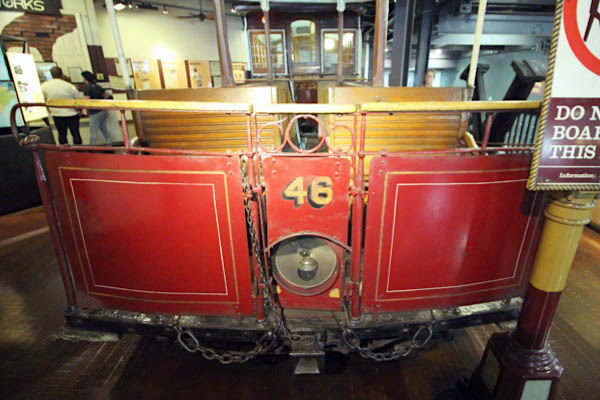
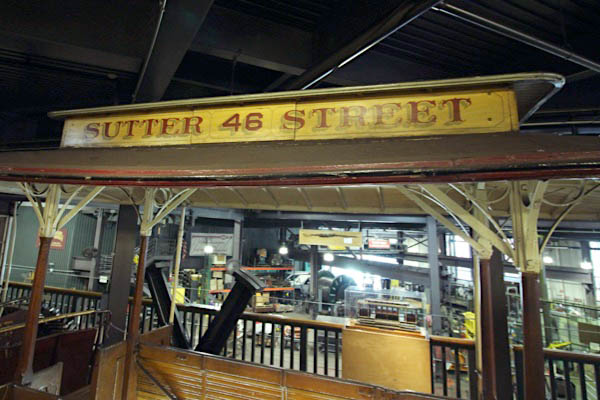
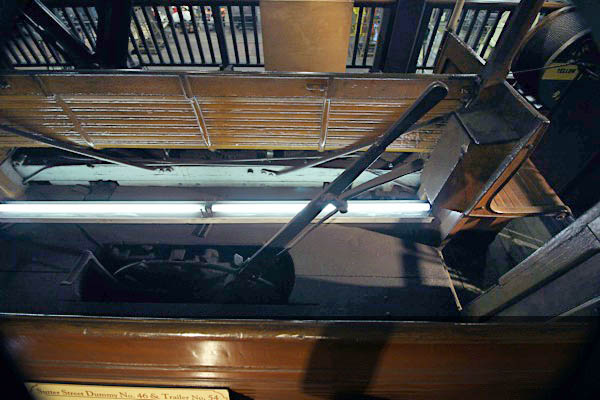
Sep 2023 / RWH
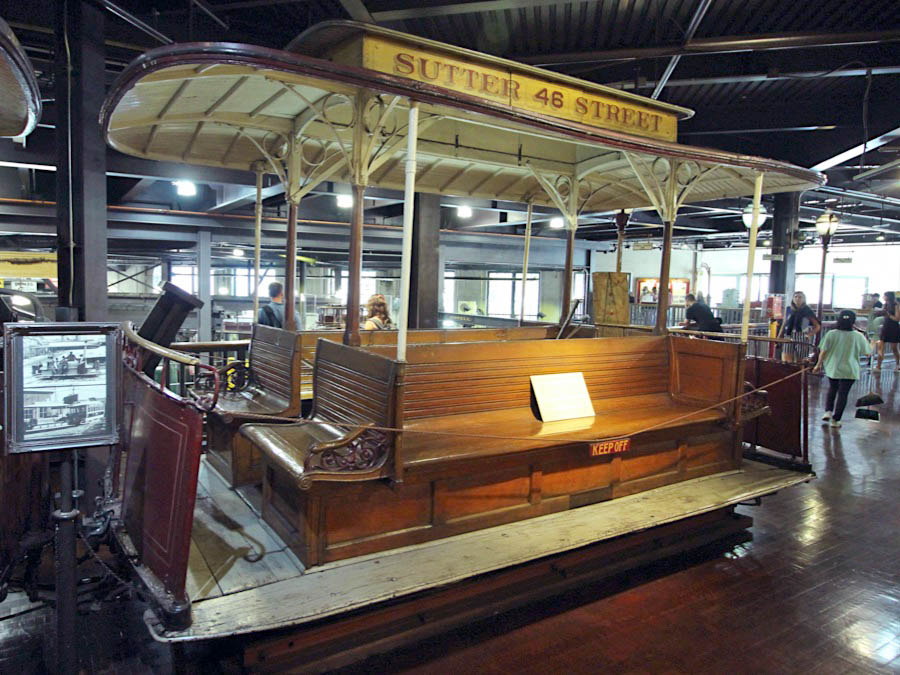
Sep 2023 / RWH

Sep 2023 / RWH
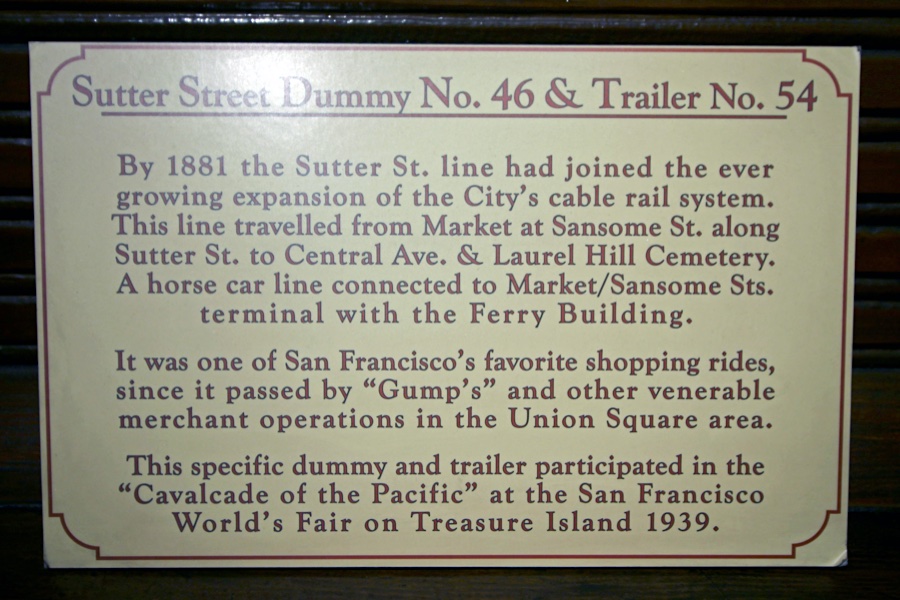
Sep 2023 / RWH

Sep 2023 / RWH
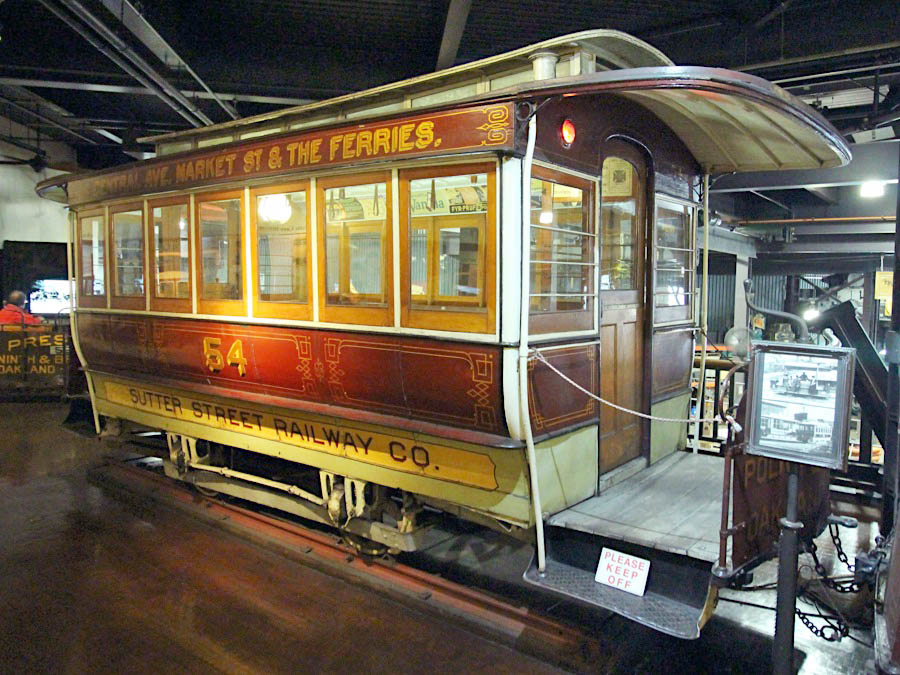
Sutter Street Railway #54
trailer car / Sep 2023 / RWH
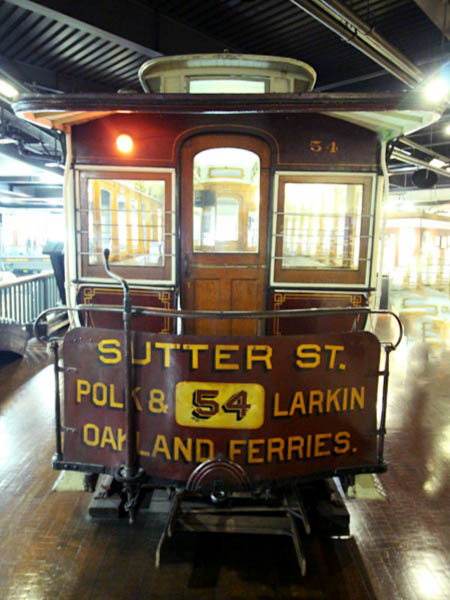
Sep 2023 / RWH

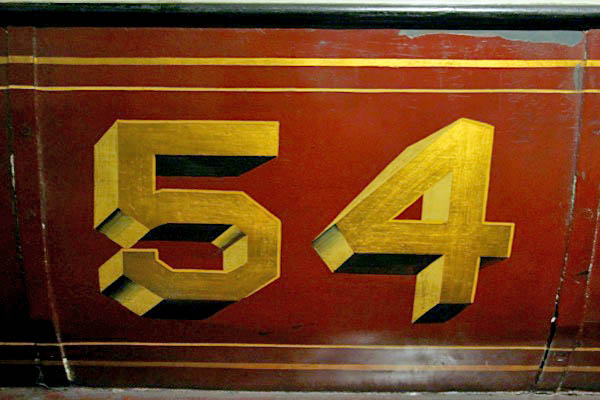
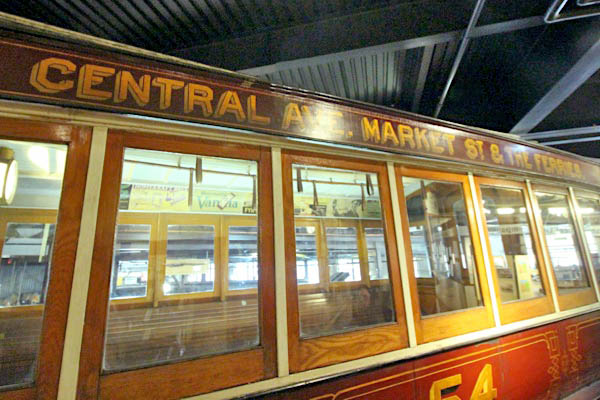
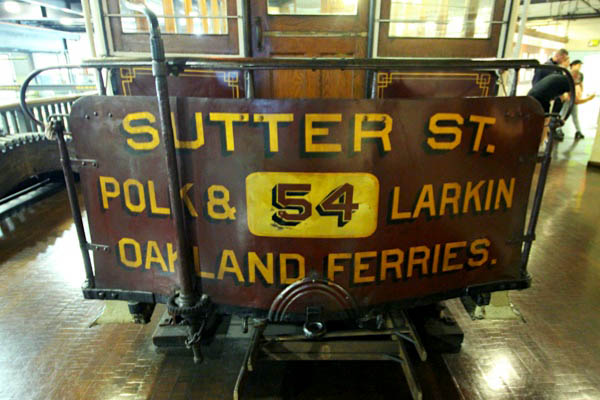
Sep 2023 / RWH
Carbarn
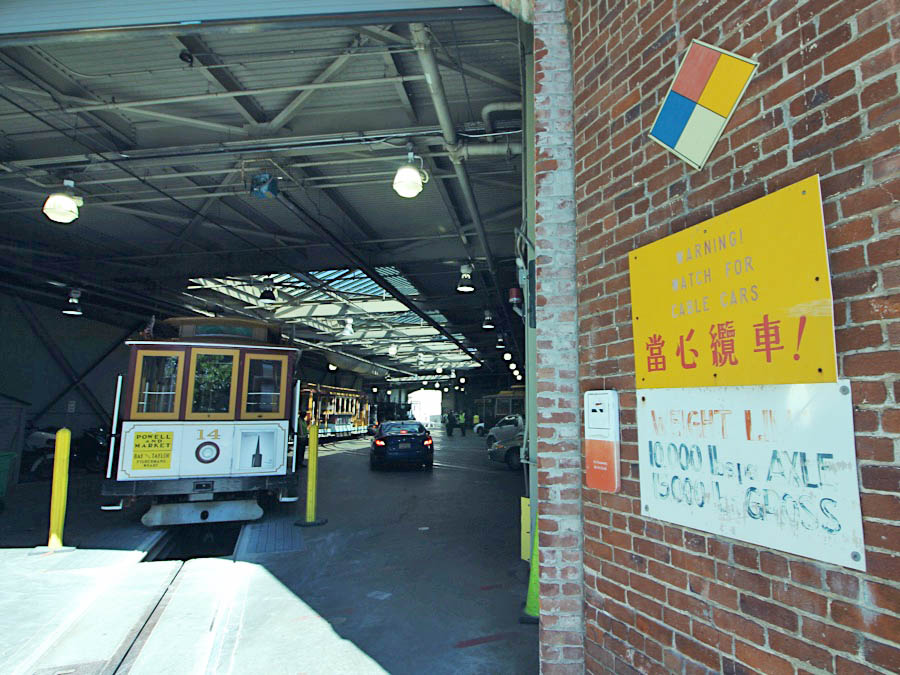
Sep 2023 / RWH
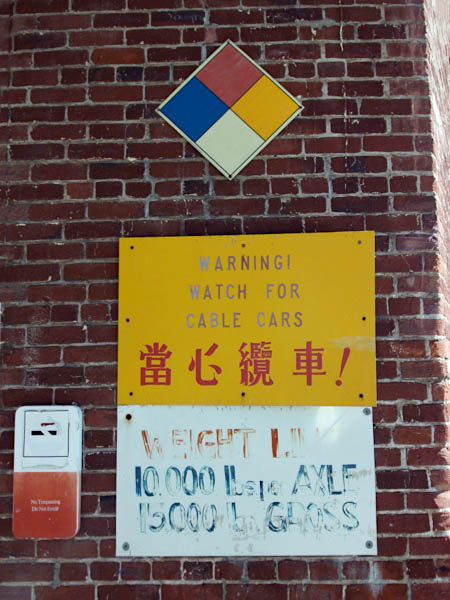
Sep 2023 / RWH
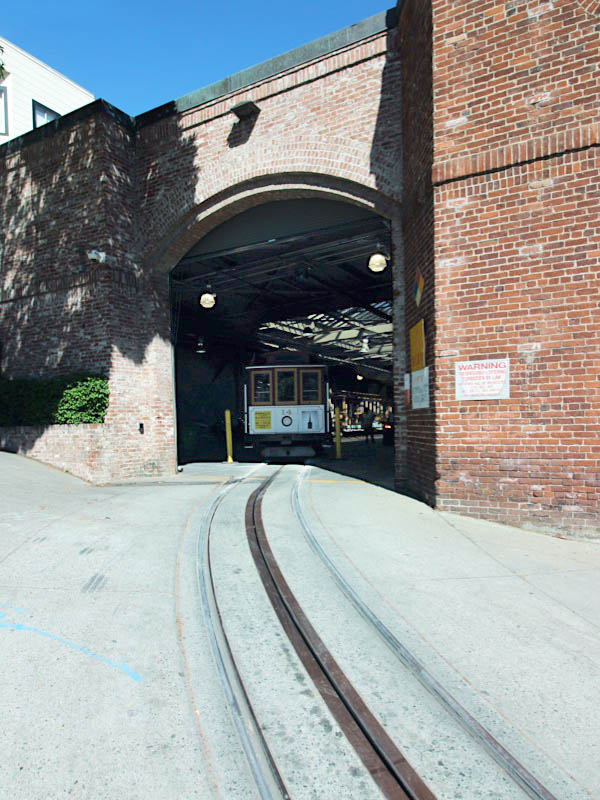
Sep 2023 / RWH

Sep 2023 / RWH
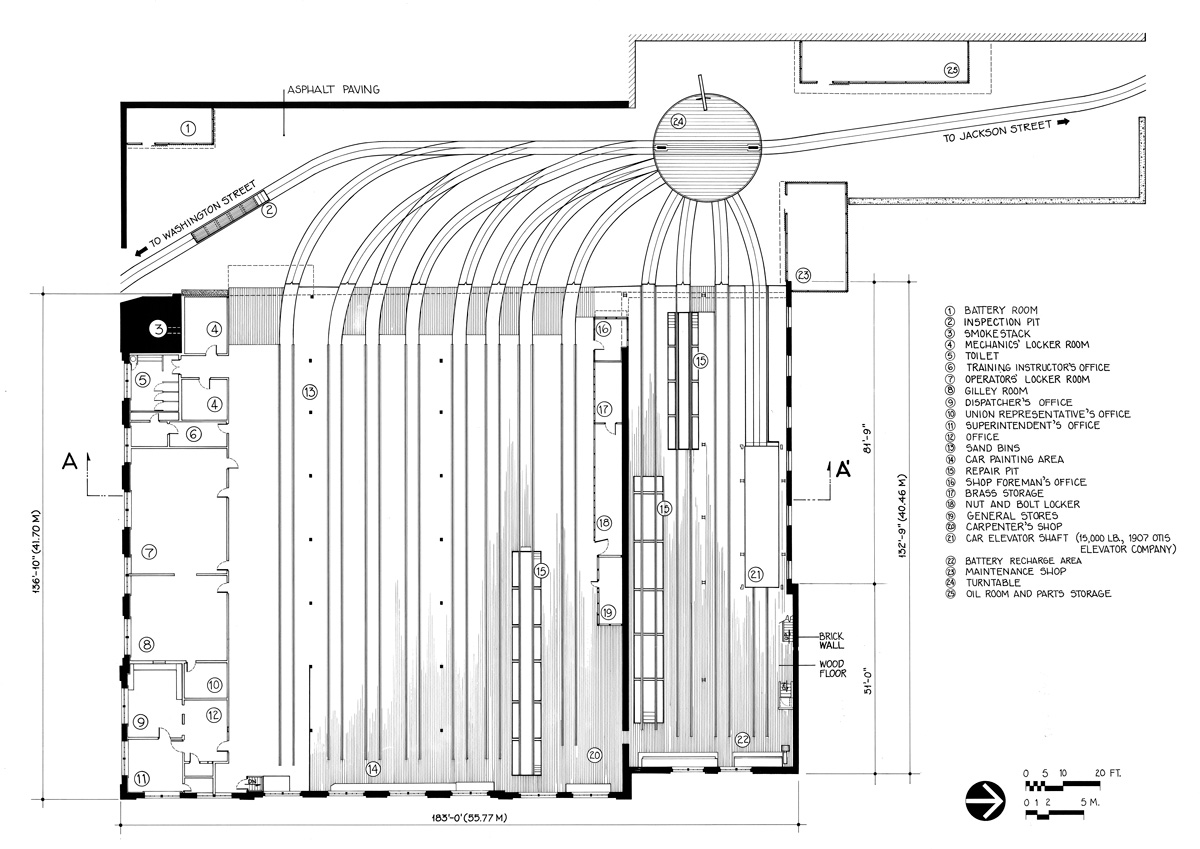
Historic American Engineering Record (Library of Congress)
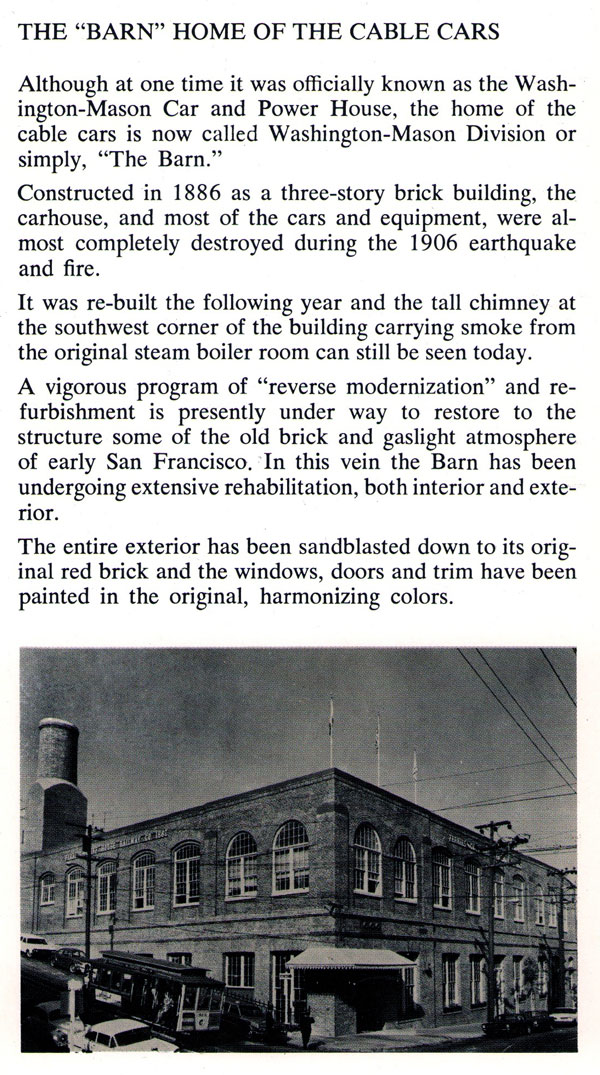
San Francisco Public Utilities Commission / collection
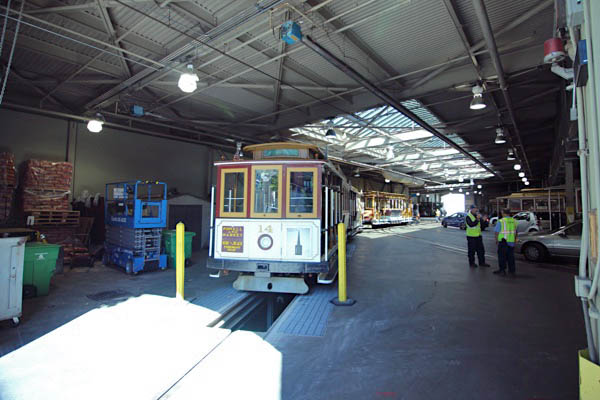
Sep 2023 / RWH
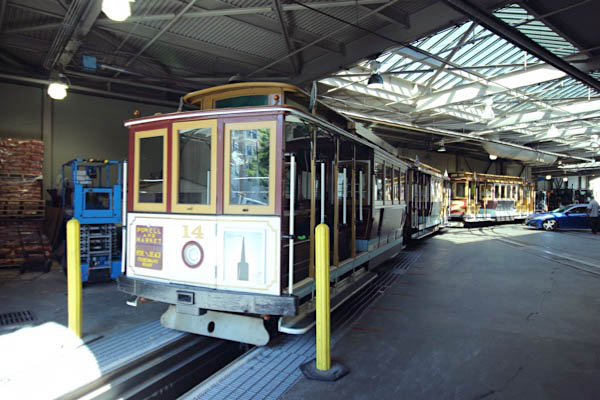
Sep 2023 / RWH
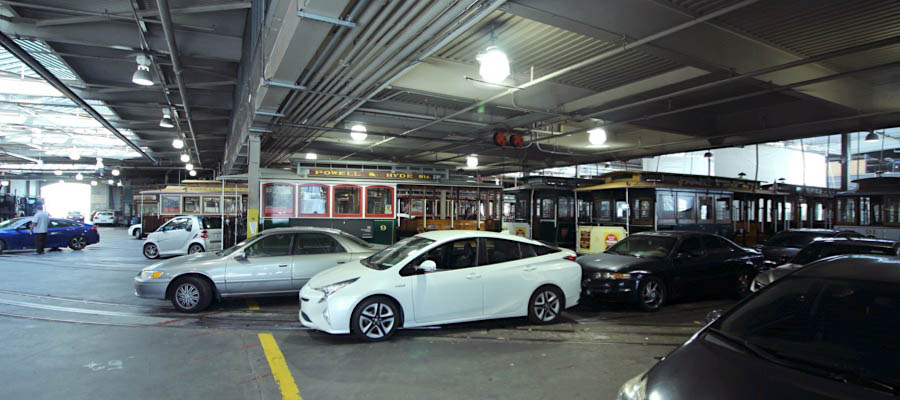
Sep 2023 / RWH
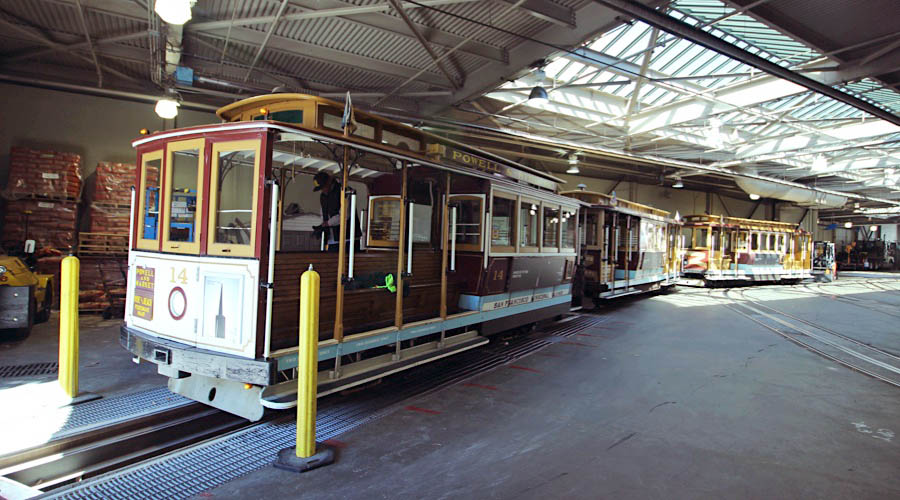
Sep 2023 / RWH
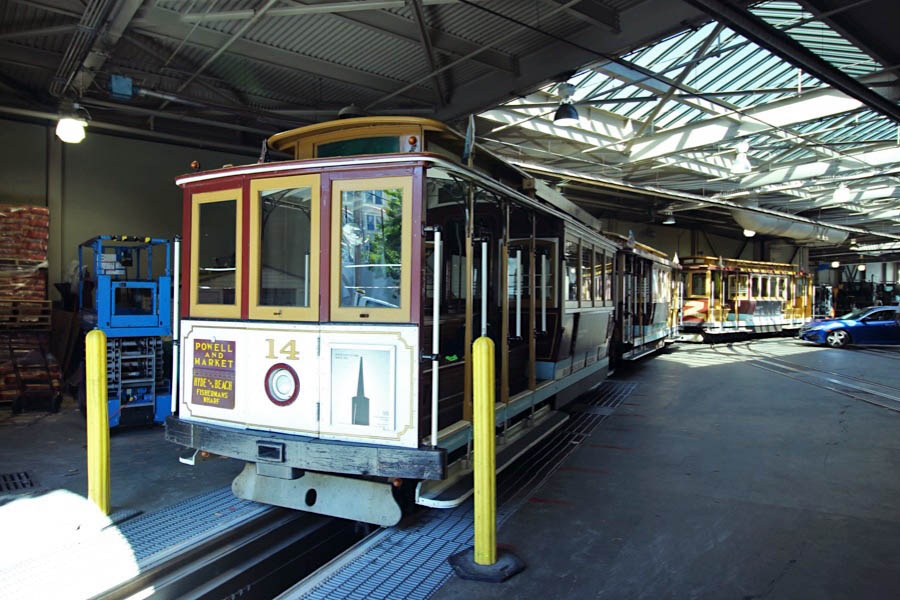
Sep 2023 / RWH
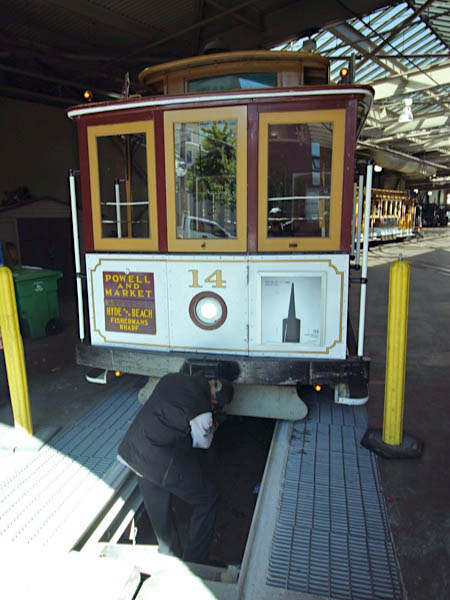
Sep 2023 / RWH
Publications
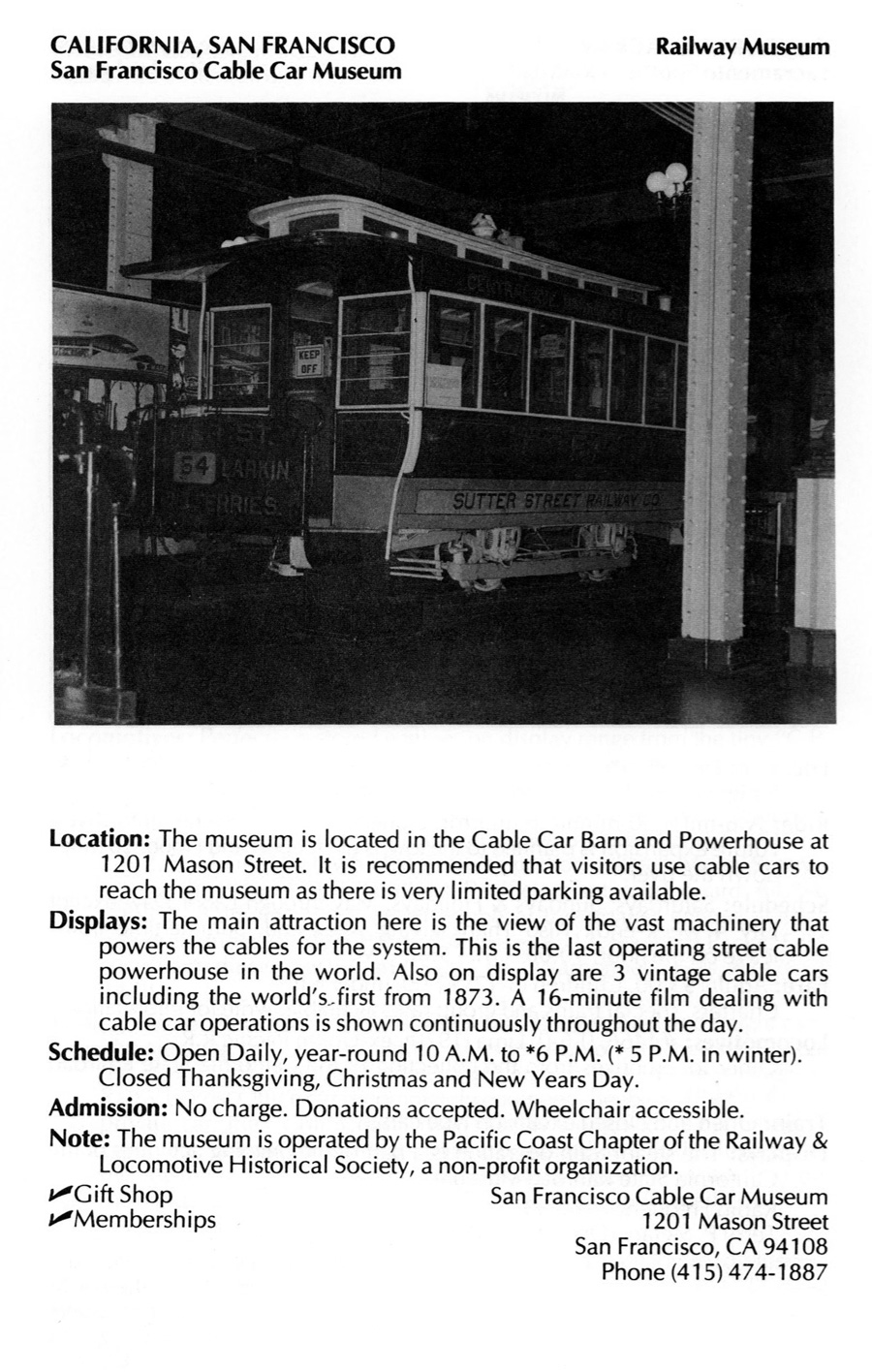
1989 tourist train guide ad / collection

1998 tourist train guide ad / collection
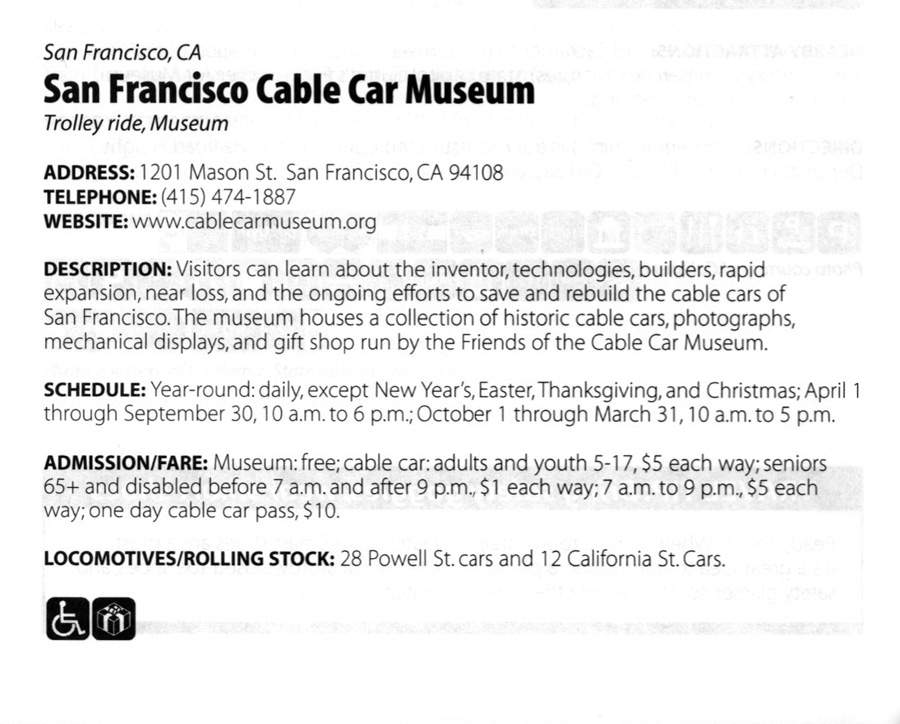
2006 tourist train guide ad / collection

2013 tourist train guide ad / collection
Lagniappe



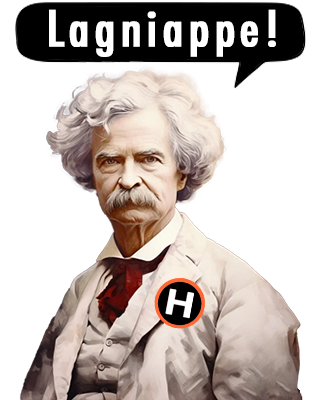

Washington
Sep 2023 / RWH

Sanctuary
Sep 2023 / RWH

Smoke 'em if You've Got 'em
Sep 2023 / RWH
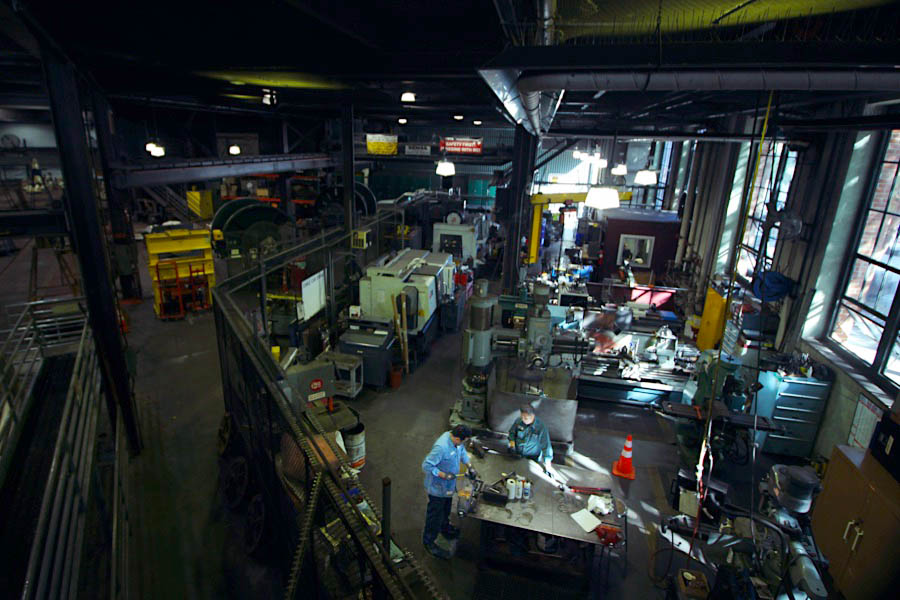
Caretakers
Sep 2023 / RWH
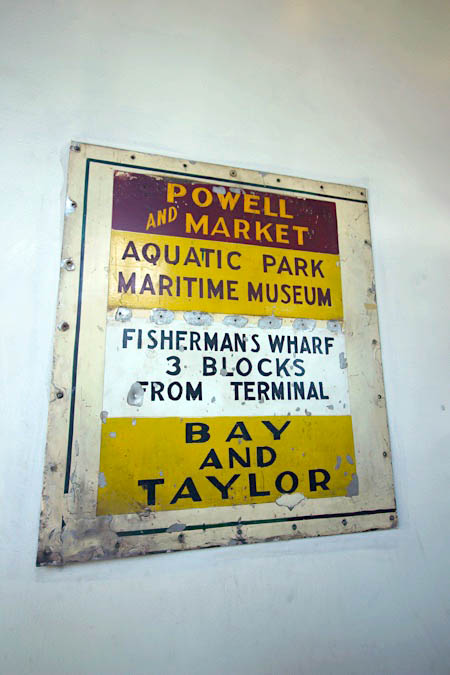
Ancient Text
Sep 2023 / RWH
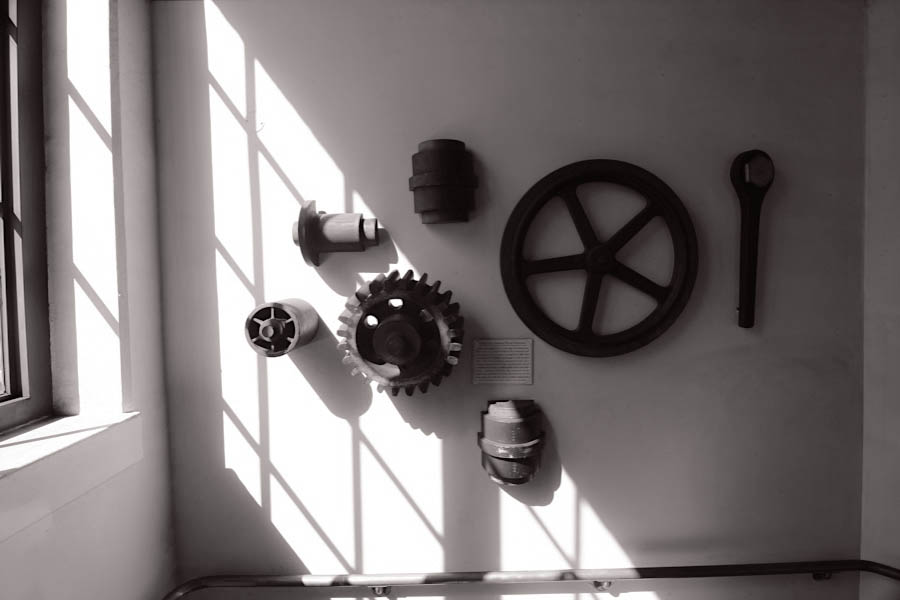
Retirement
Sep 2023 / RWH

Horse and Buggy
Sep 2023 / RWH
 Snapshots
Snapshots
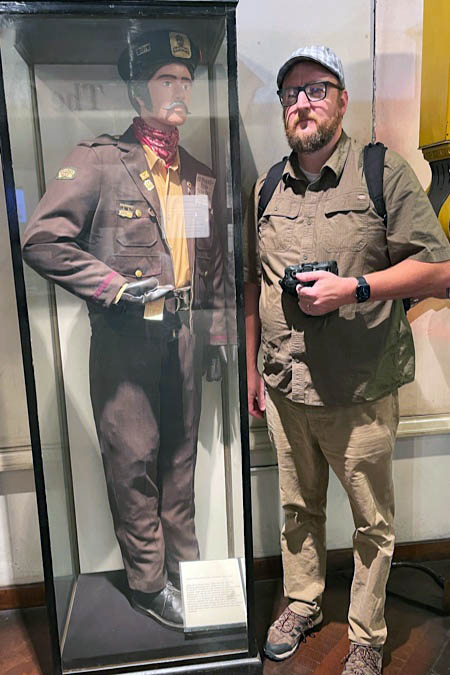
Sep 2023 / DKT
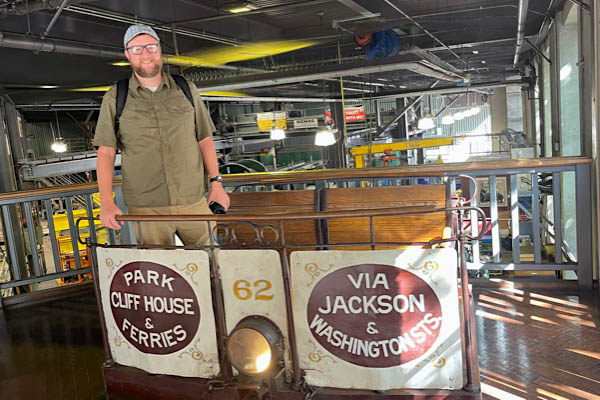
Sep 2023 / DKT
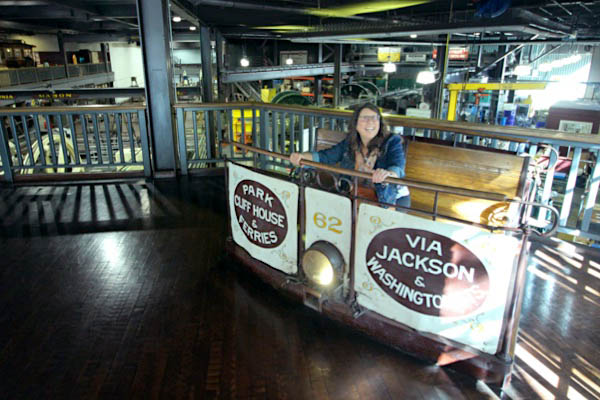
Sep 2023 / RWH
Links / Sources
- Cable Car Museum website
- Wikipedia article for San Francisco Cable Car Museum
- The Cable Car Home Page by Joe Thompson

